
It’s been a long while since my last Project bB update, but with things actually coming together now I thought it would be a good idea to bring you guys up to speed before progress (hopefully) becomes more rapid.
When we left off, the stock engine and automatic transmission had been pulled out at JTune Automotive‘s workshop in Auckland, and my attention was turned to prepping the Toyota 1.5L four-cylinder for boost.
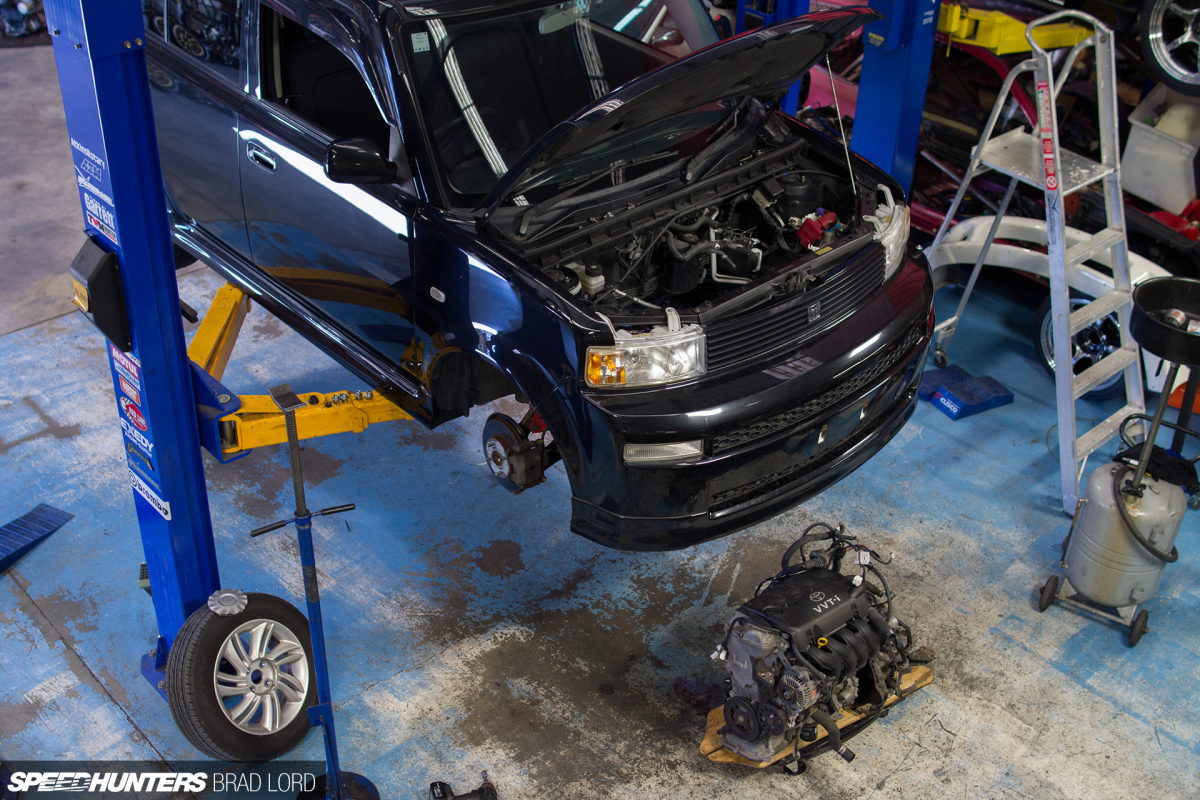
Truth be known, when I first envisaged turbocharging this bB my idea was far less grand. In Japan circa 2003, the JDM Vitz (Yaris), iST (Scion xA) and bB (Scion xB) was available to purchase in Toyota Racing Development (TRD) turbo guise, a bolt-on modification that really woke up the 1NZ-FE engine with just a few PSI worth of boost, raising the power output from 110hp to around 150hp in the process. Fifteen years after the fact, road-worthy examples and engine packages from tired and crashed cars pop up quite regularly in Japan, so the easiest way for me to turbocharge my bB would have been going down this route.
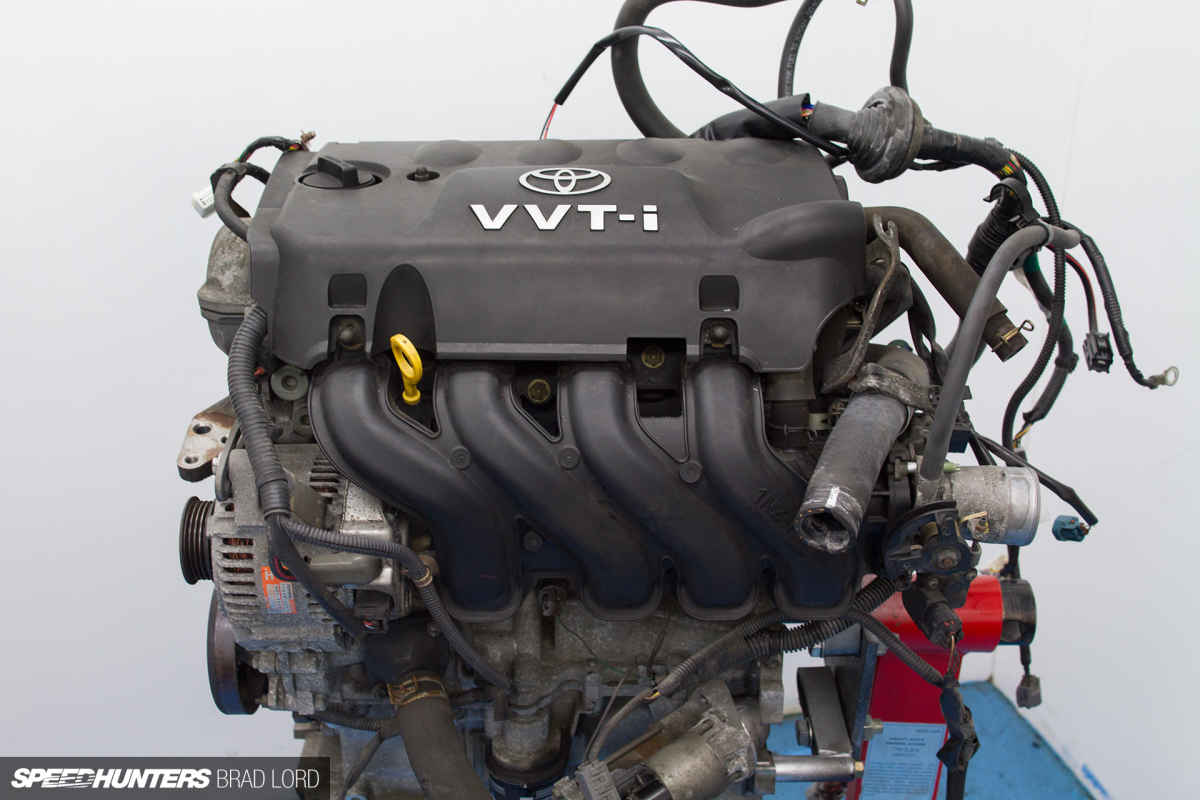
But then I started thinking about the age of and amount of mileage any engine I found would have on it, and how at least a refresh would be on the cards at some point. While I’m sure the car would be fun to drive with an extra 40hp and a whole lot more torque, I figured that by rebuilding the 1NZ from my bB – which I at least knew to be in good running condition despite having clocked up 100,000km (62,000mi) – I’d be able to make it stronger while dropping the compression ratio from the engine’s factory 10.5:1 to a more boost-friendly level. So I decided to bite the bullet and use the engine out of the car for the basis of turbo-spec build, which would ultimately allow me to lean on it a bit harder.
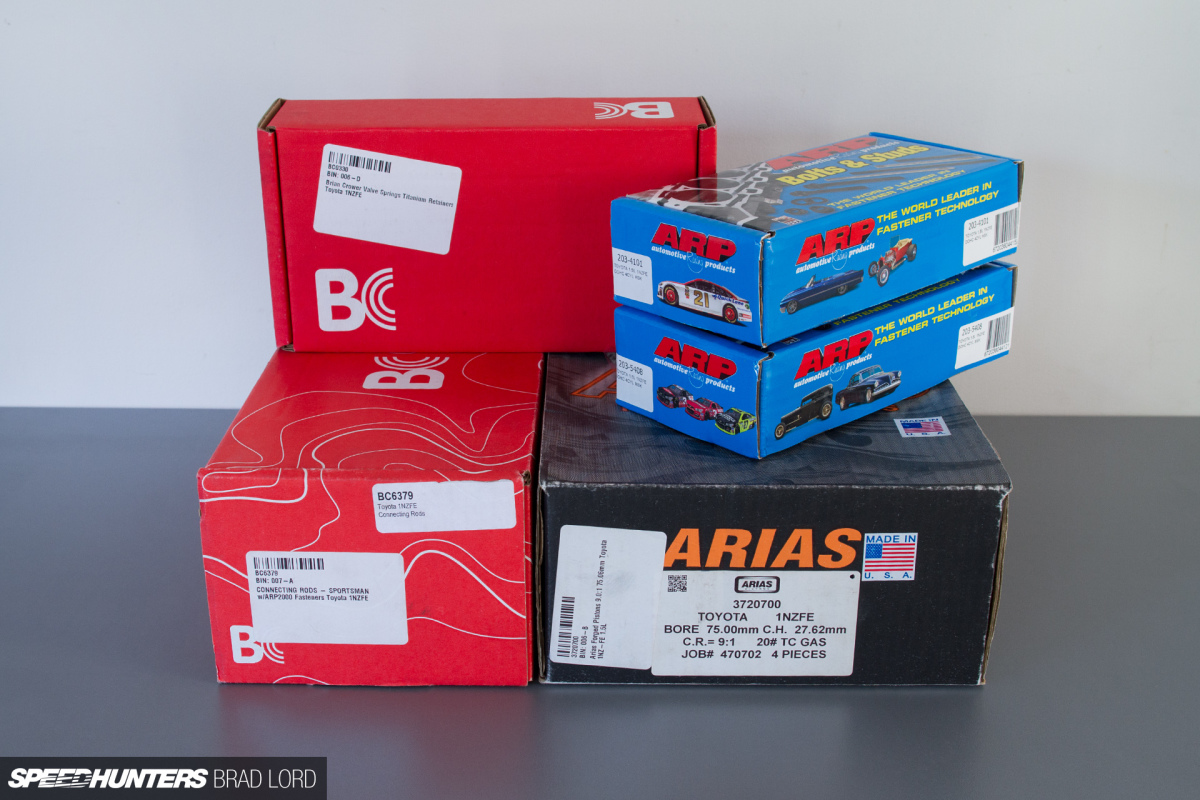
Although the 1NZ-FE is a very basic 1.5-litre twin cam 16-valve unit that Toyota fitted in many of its compact, budget models, once I started looking there was a surprising number of off-the-shelf options when it came to upgraded internals. These ranged from eBay-generic to high-end. I didn’t want to spend a silly amount of money, so I chose parts based on a combination of brand reputation and cost.
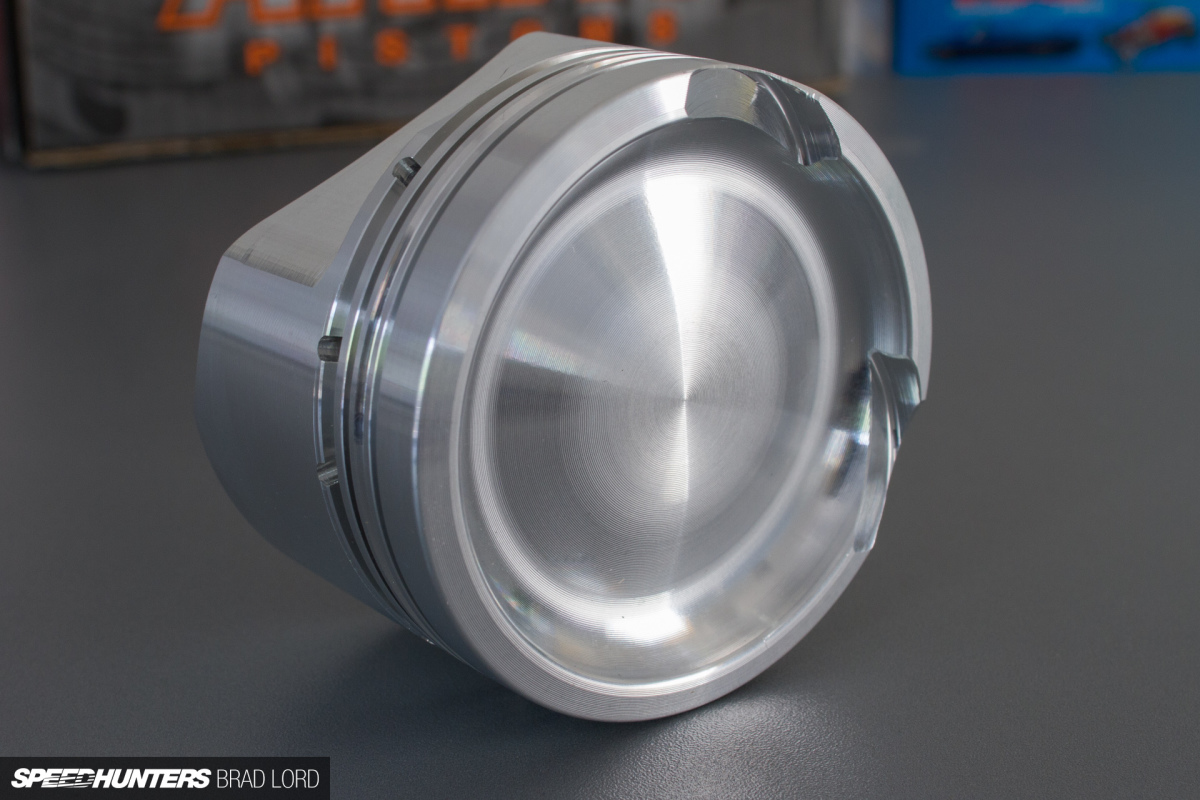
I guess I could have gotten away with a simple con-rod swap, but since the engine was completely coming apart, forged pistons made total sense too. For these I went with Arias, which has two different compression offerings for the 1NZ – an 11.5:1 spec for high-comp naturally aspirated builds, and 9.0:1 for forced induction and nitrous applications. For both these options there was also the choice of 75.06mm (+0.06mm oversized – ever so slightly larger than stock) or 75.50mm (+0.5mm oversized) bore sizes.
But here’s where I made my first mistake – believing what I was going to receive was the same as what was advertised. Actually, that was my second mistake when it came to this engine build. The first mistake was not having the machine shop measure up the cylinder bores prior to ordering the pistons, because if I had done that I would have known that the engine was slightly out of spec, and that the .05mm oversized option were my best bet. Of course, by the time I had this information the “75.06mm” pistons were already in my hands here on the other side of the world. But this was only the start of my problems…

The Arias pistons turned out to be smaller than what they’re advertised as (they’re actually stock sized not +0.06mm oversized), which left me with a few options: #1) Find another 1NZ block and see if that was any better. #2) Cut my losses and order a new set of oversized forged pistons. #3) Have liners/sleeves custom made and installed in the block. #4) Forego correcting the bores, fit the pistons and hope for the best. Because of my limited budget, I ruled out the #2 and #3 options straight away.
For #1, the guys at New Zealand Car Parts Auckland sorted me out with 1NZ from a 2014 Yaris YRS with just over 50,000km (31,000mi) on it. Given the relatively low mileage and clean condition of the engine I really thought this 1NZ was going to be my saviour, but measuring up its bores revealed that it too was not in perfect spec for standard sized pistons. Interestingly, the measurements between the two blocks were quite similar, which then posed another a couple of questions and raised another potential issue: Do these econobox engines even have perfect bores from factory? And more importantly, what was going to happen to the shape of the bores when the cylinder head was torqued back down? I could have answered the last question by having a custom torque plate made to simulate the cylinder head fitted, but the cost of doing that was prohibitively expensive.
It was at this point that I decided that option #4 was the best course of action. Prior to pulling the engine apart it was running well and not in the slightest bit smokey (even when revved hard on the dyno), so simply deglazing the bores and fitting the same size pistons as factory (albeit forged ones) would theoretically be no worse than what I started with, but with the extra strength and lower compression I needed.
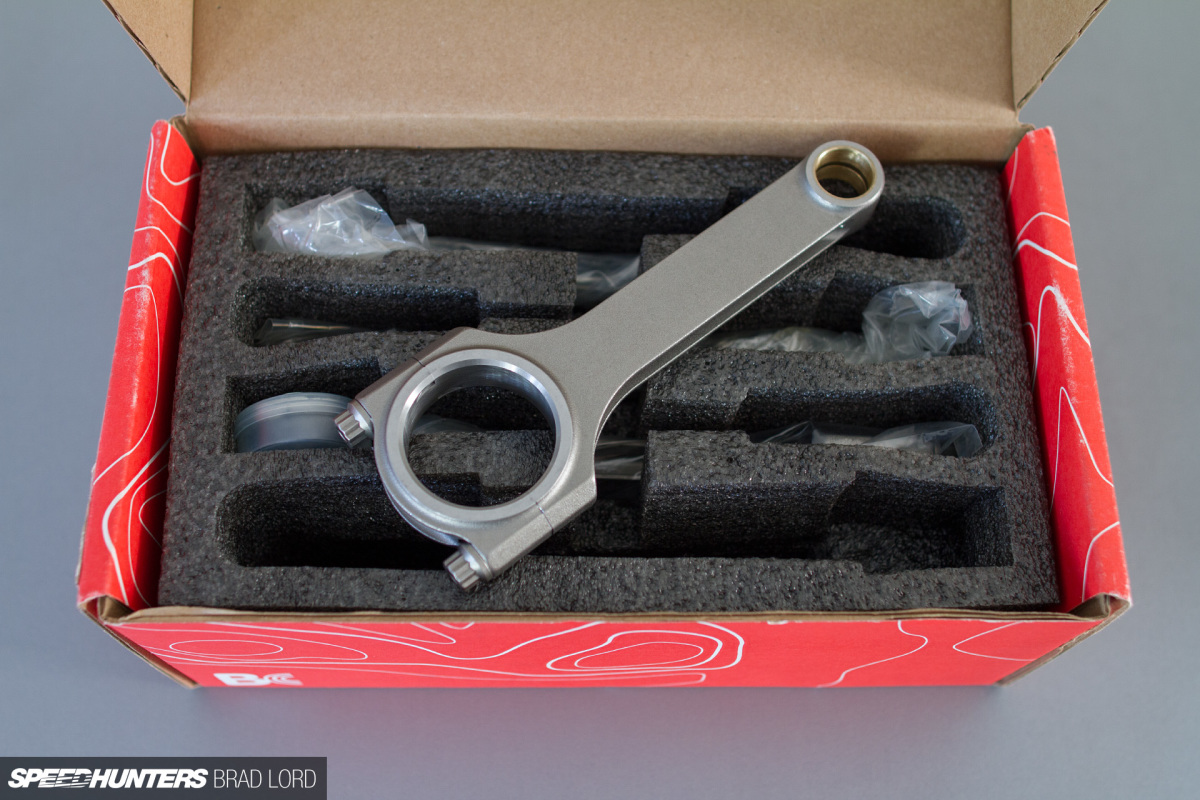
For the connecting rods I went with Brian Crower (BC) parts. As I’ve mentioned previously, the 1NZ’s standard rods are its achilles heal, and when you see one below I don’t think I’ll need to explain why. By comparison, the BC rods are seriously beefy. Yes, most of that has to do with their H-beam design, but being made from aerospace-grade 4340 billet steel they’re far superior from a material standpoint. The rod bolts are ARP2000 fare.
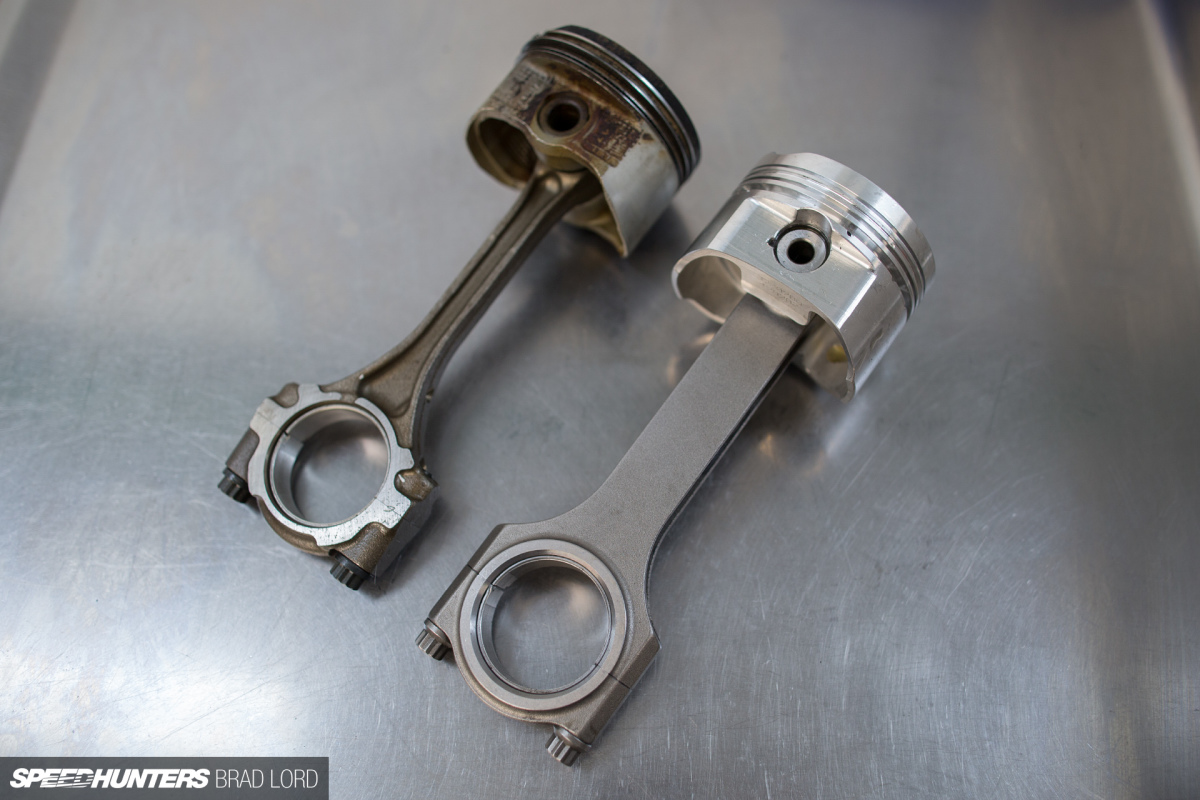
For one final shot of the internal upgrades, here’s a side-by-side comparison of the stock Toyota piston and rod combination out of my bB’s 1NZ, and the new Arias forged piston (sans rings) and BC forged rod combination. The new parts are almost too pretty to be hidden away inside the engine, but in saying that I’ll be very happy if I don’t ever see them again!
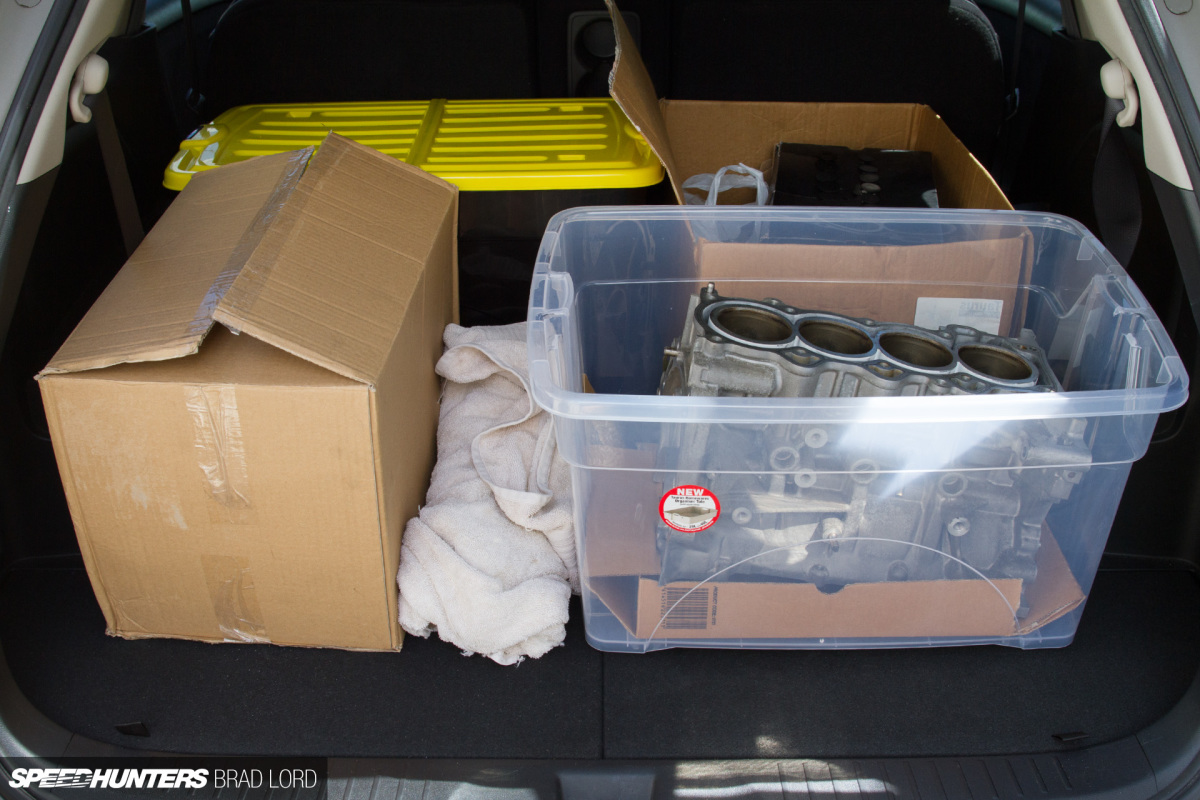
I’m having my buddy Andrew, an experienced race engine builder, help piece my 1NZ together, but I entrusted all the machine work with one of the country’s most respected companies for this type of work. Taylor Automotive has been in business since 1979 and is the go-to for many performance shops in New Zealand. They’re also pretty active in motorsports, with owner Harley Taylor campaigning a front-running New Zealand speedway Midget, and also about to get behind the wheel of a very cool BMW race car, which coincidently Andrew did a lot of work on.
The plan was simple: To Andrew’s spec, Taylor Automotive would prep the block for assembly – including all the machine work and critical sizing of bearings – and also recondition the cylinder head. Given the throughput of work at Taylors’ it was going to be difficult for me to shoot the entire machining process, but Paul the shop manager was happy to provide a few images as things progressed.
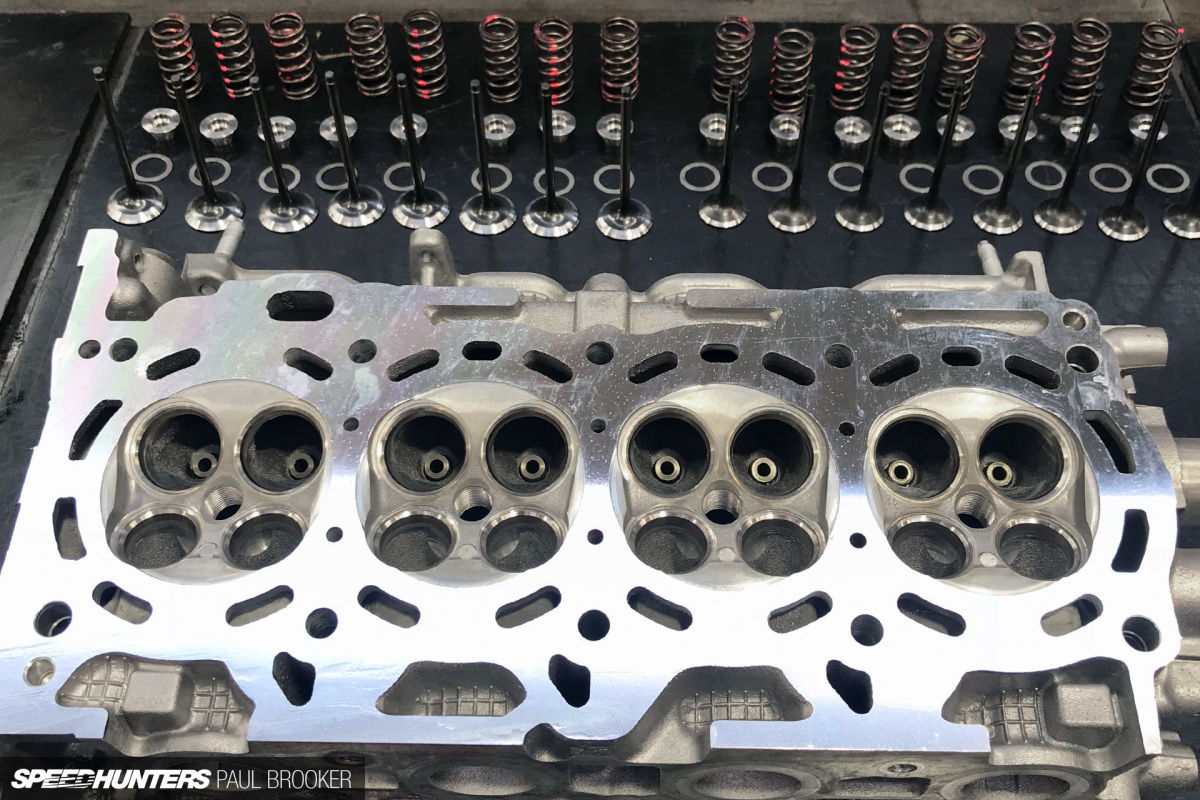
The cylinder head was worked on first, and here you can see all of the valve gear set out before reassembly. If I was building this motor up for high horsepower or high RPM race use I definitely would have had the head ported and fitted out with bigger valves and turbo-spec camshafts, but because my focus is strength and street use, we didn’t worry about any of that stuff.
Prior to the rebuild the bare head was hot tank cleaned and lightly skimmed, and the valves were reseated for optimum seal after being given a back-cut to aid in flow. I supplied brand new Toyota OEM valve stem seals (which came with the full engine gasket set), along with the 16 cam buckets/lifters from the second engine in case they could be utilised when the valve clearance was being set.
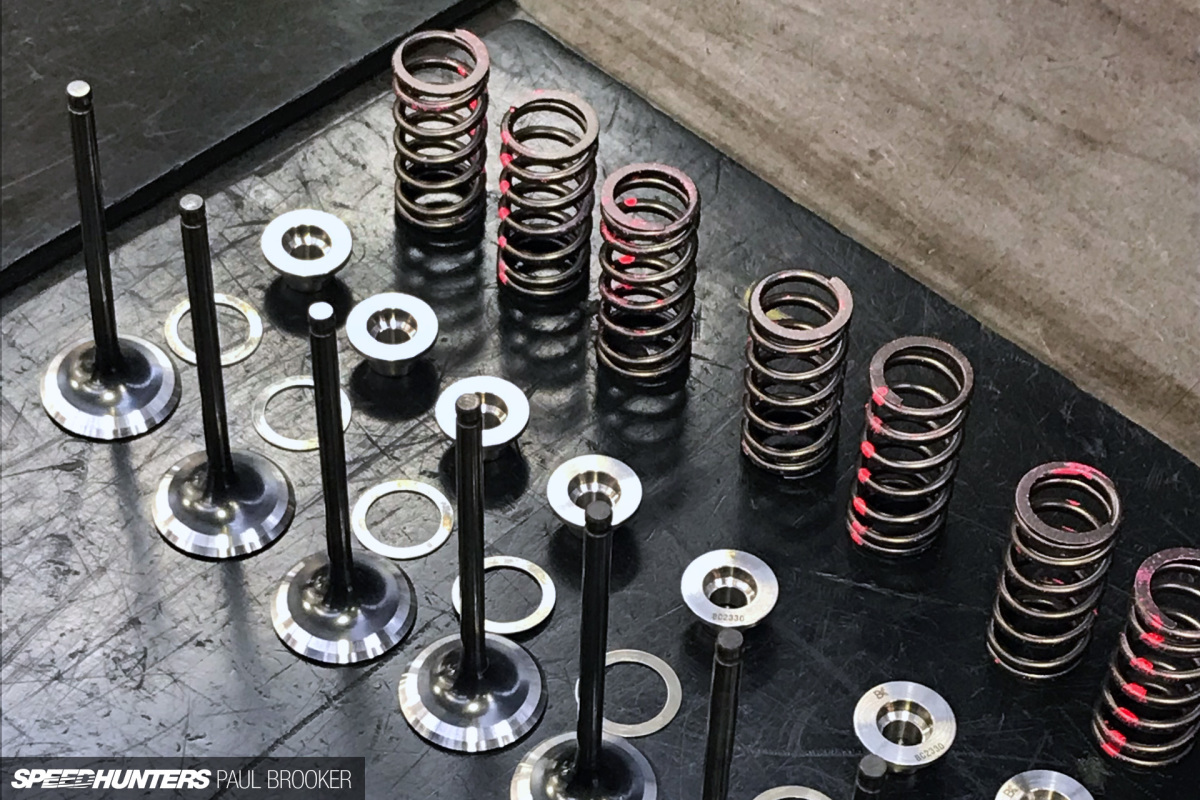
There was one cylinder head upgrade I did opt for: Brian Crower valve springs. Whether to upgrade valve springs or not seems to divide opinions on the internet, with many claiming that they’re only required for high-RPM naturally aspirated builds. The other school of thought, and one I know that’s shared by our friend Bisi Ezerioha from Bisimoto, is that valve springs are an upgrade you absolutely need to make if you’re adding forced induction to a naturally aspirated engine. The reason? Boost pushes down on the back of the valve face, fighting the spring and decreasing its rate. By increasing the valve spring rate (by fitting performance valve springs) you’re counteracting the effect. The cost for the spring and titanium retainers set was really reasonable, so I think it was a worthwhile upgrade to make.
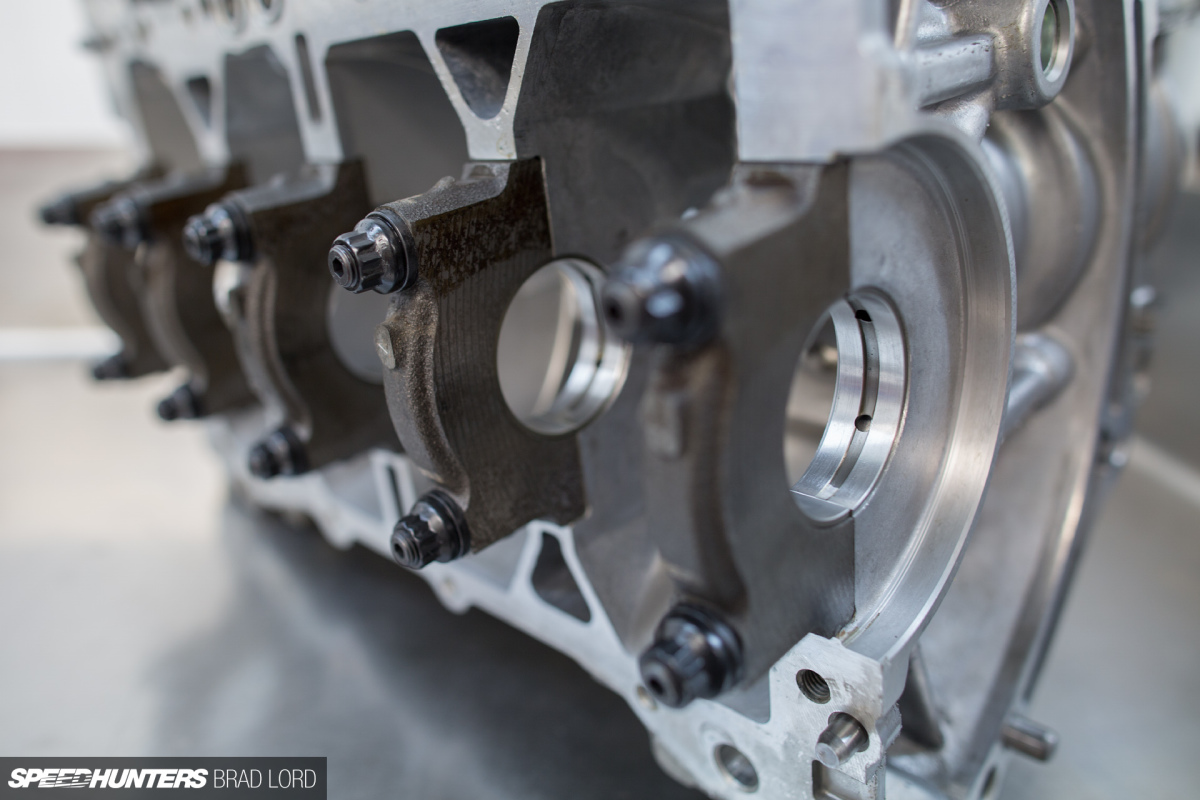
We’re going to be bolting the cylinder head down with ARP head studs, and I also grabbed a set of ARP main studs for piece of mind. Because the ARP mains have a far greater clamping force than the OEM studs distortion of the main bore is a real possibility, so a line hone was completed with the main caps in place and everything torqued up to spec.
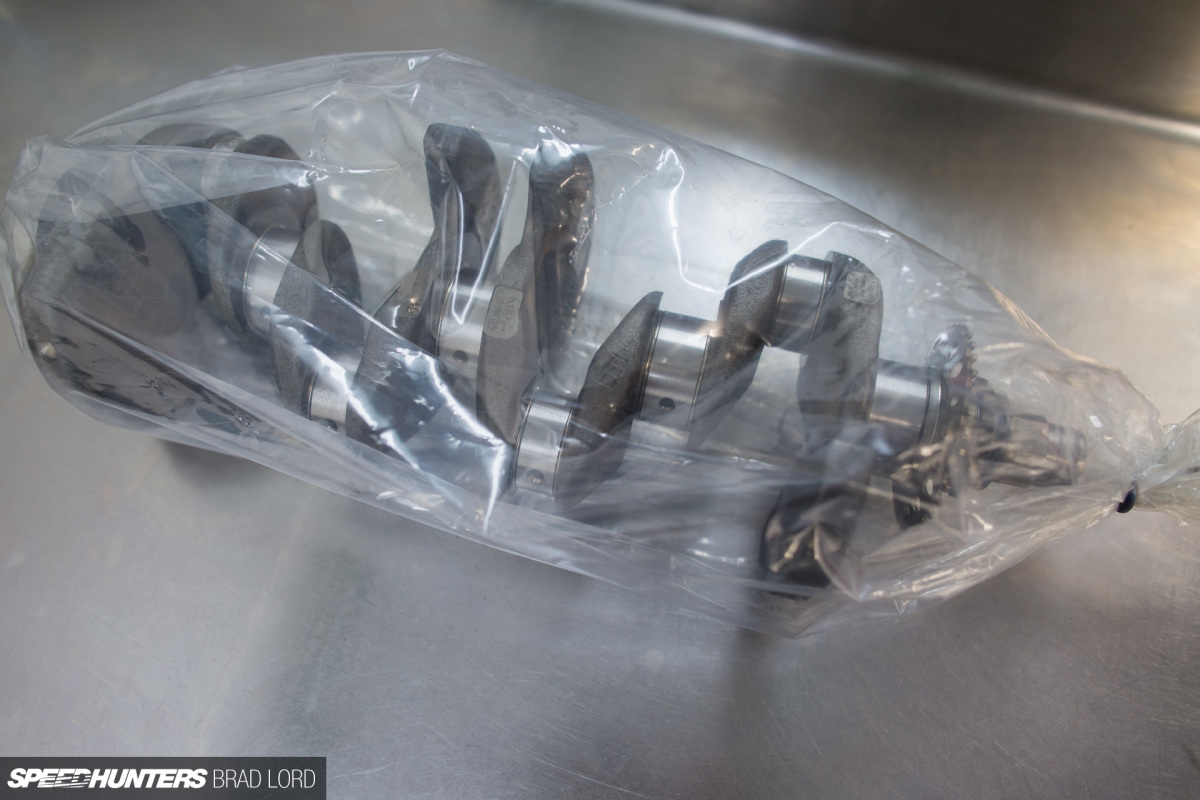
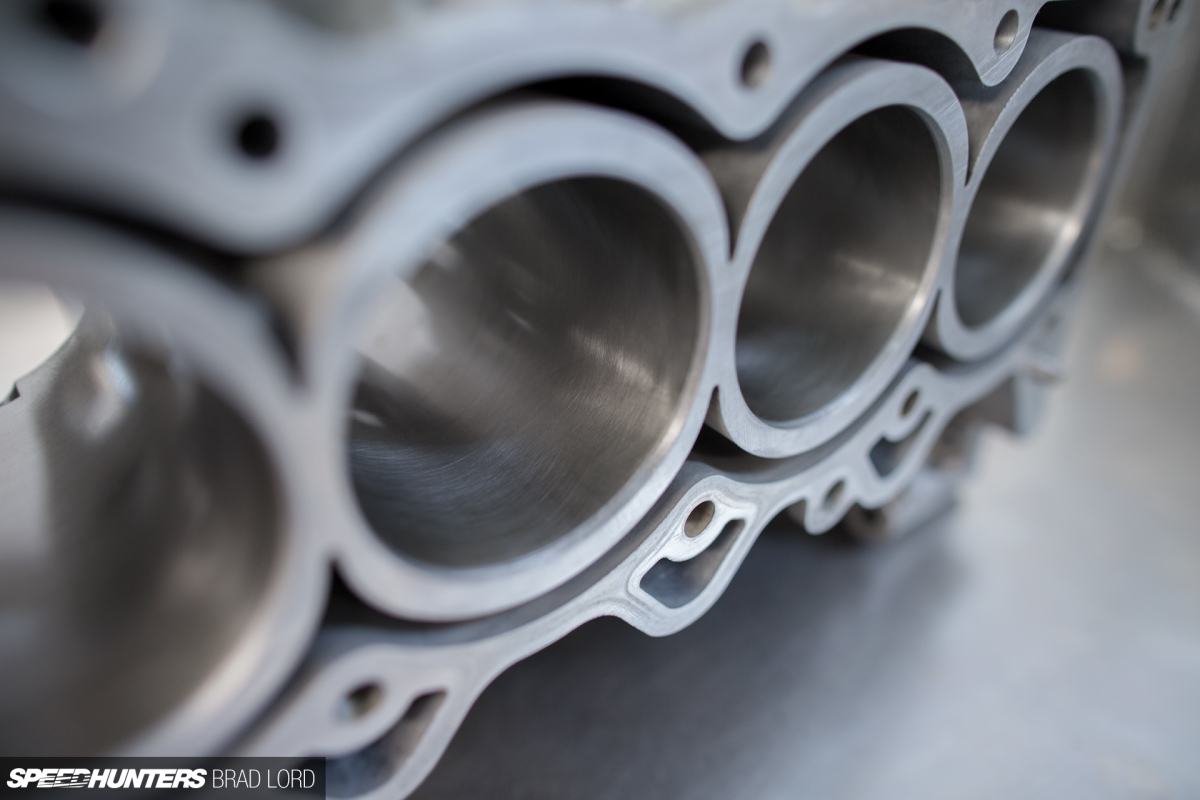
This was after the cylinders were given their super-light de-glazing hone and the crank journals were polished.
At this point the only other thing left to take care of was one of the most important ones – notching the cylinders for connecting rod clearance. This is a common requirement when changing to rods with bigger physical dimensions than the stock items, and in the case of my 1NZ a reasonable amount of material at the bottom of the cylinders needed to be removed.
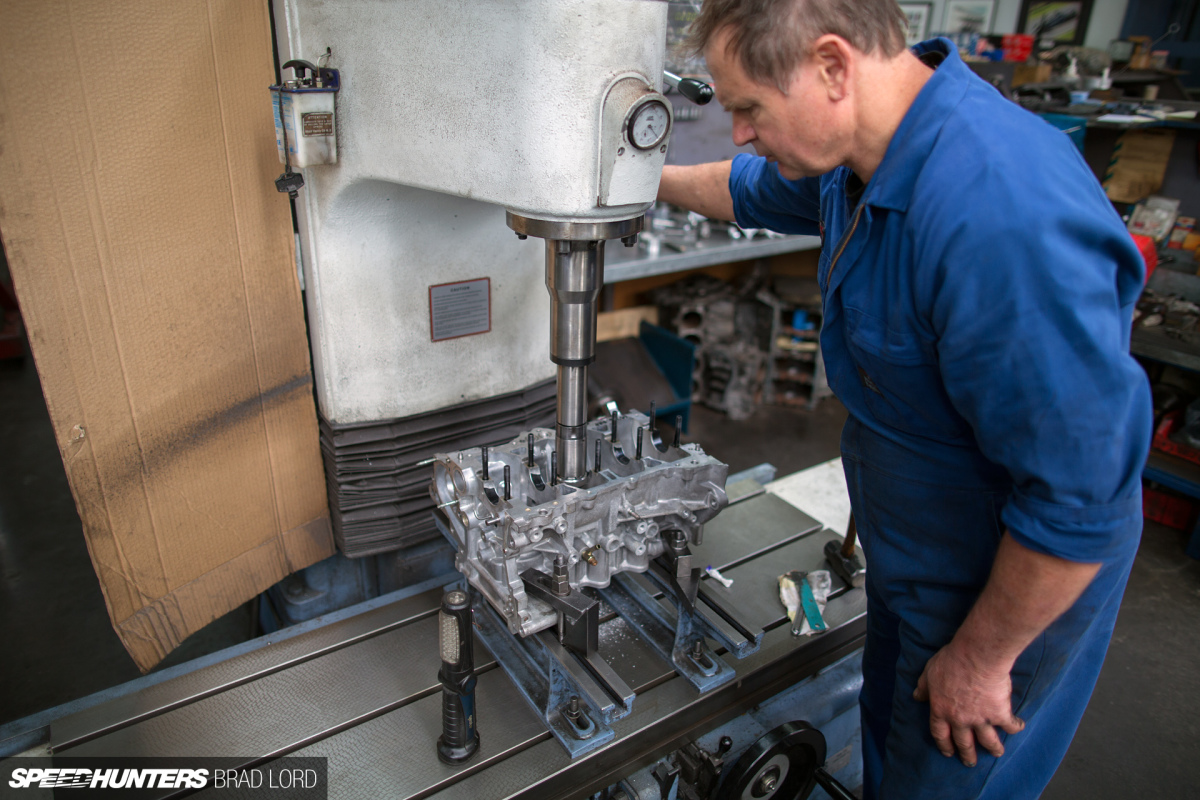
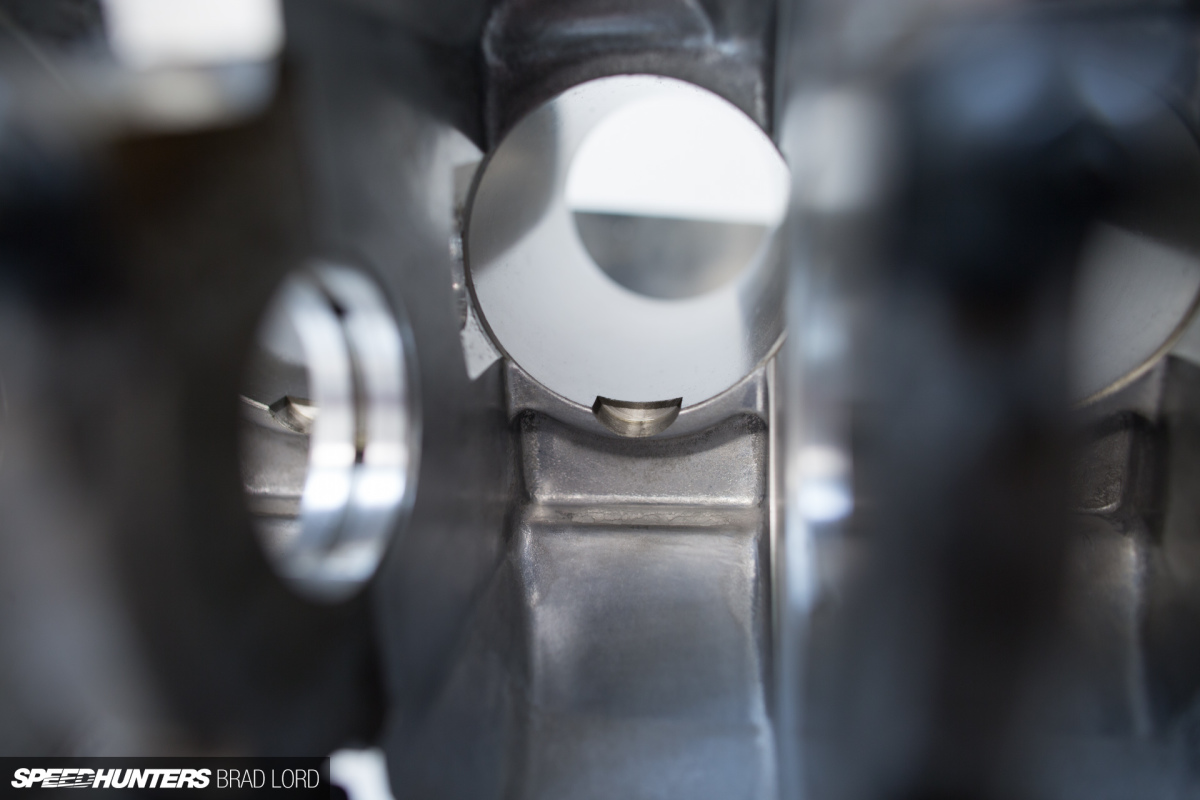
I was in the shop when Dieter, who has worked at Taylor Automotive for 30 years, was making the notches. At first, around 5mm of material at the very bottom of the cylinders where the BC rods would otherwise hit was removed, but that still wasn’t enough clearance. Ultimately, a 9mm notch was made, and we were good to go.
With all the machine work done, we’re now ready to piece the engine back together, which means we’re one step closer to getting it back in the bay mated up to the Vitz RS 5-speed manual gearbox. I envisage, or at least hope, that we’ll be getting through the next stage of the project quite quickly, so you can expect me back sooner rather than later with another Project bB update.
Brad Lord
Instagram: speedhunters_brad
brad@speedhunters.com






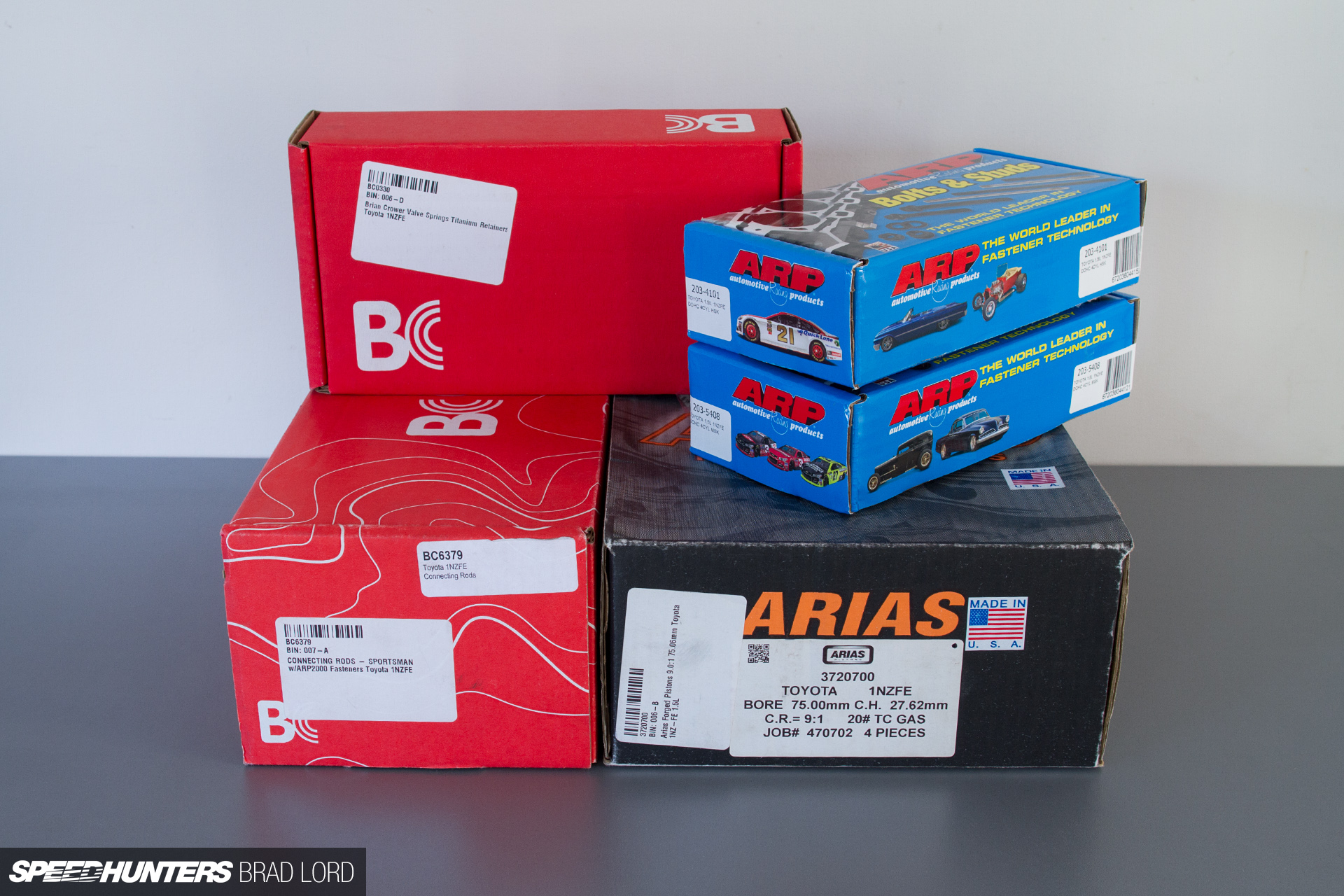






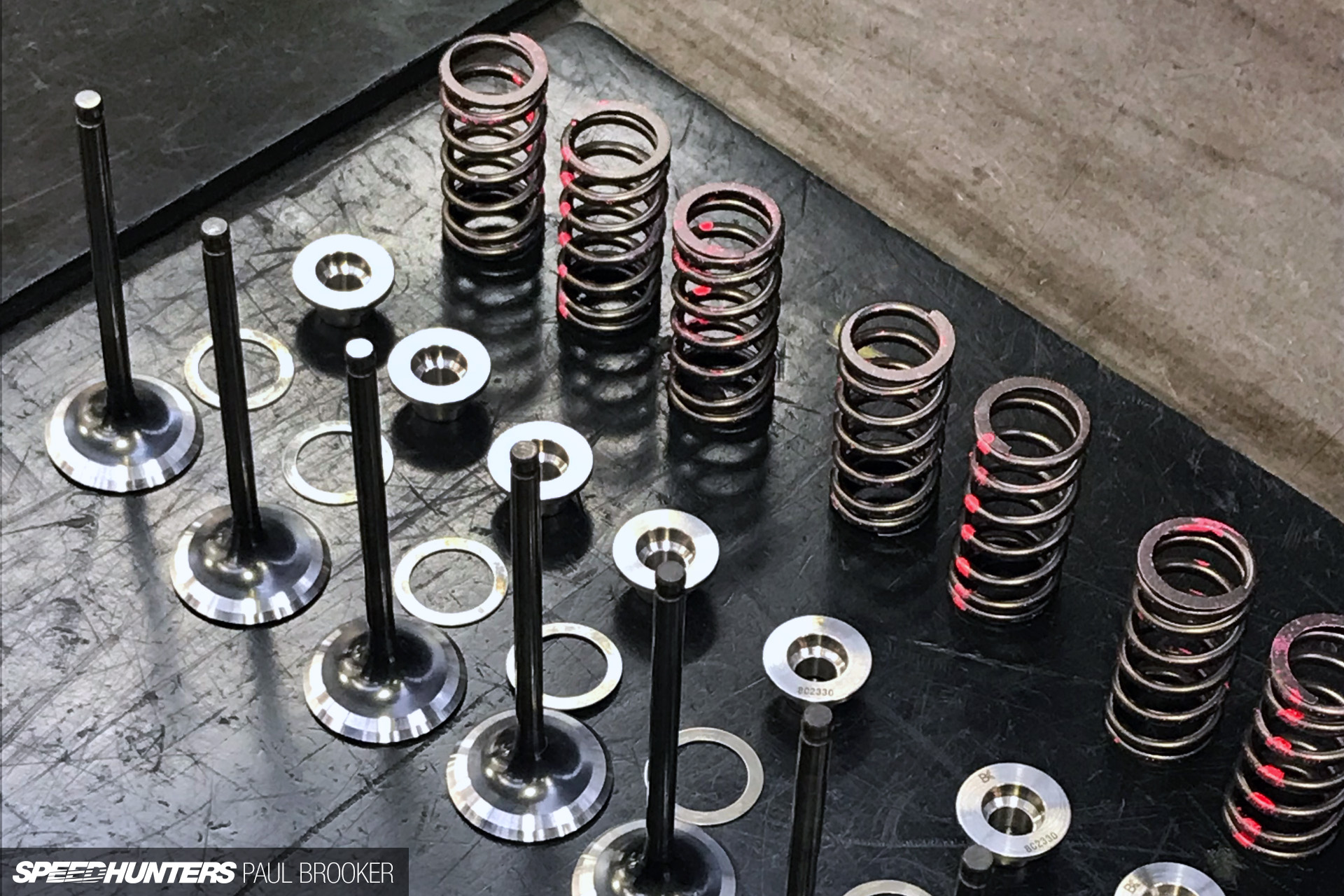
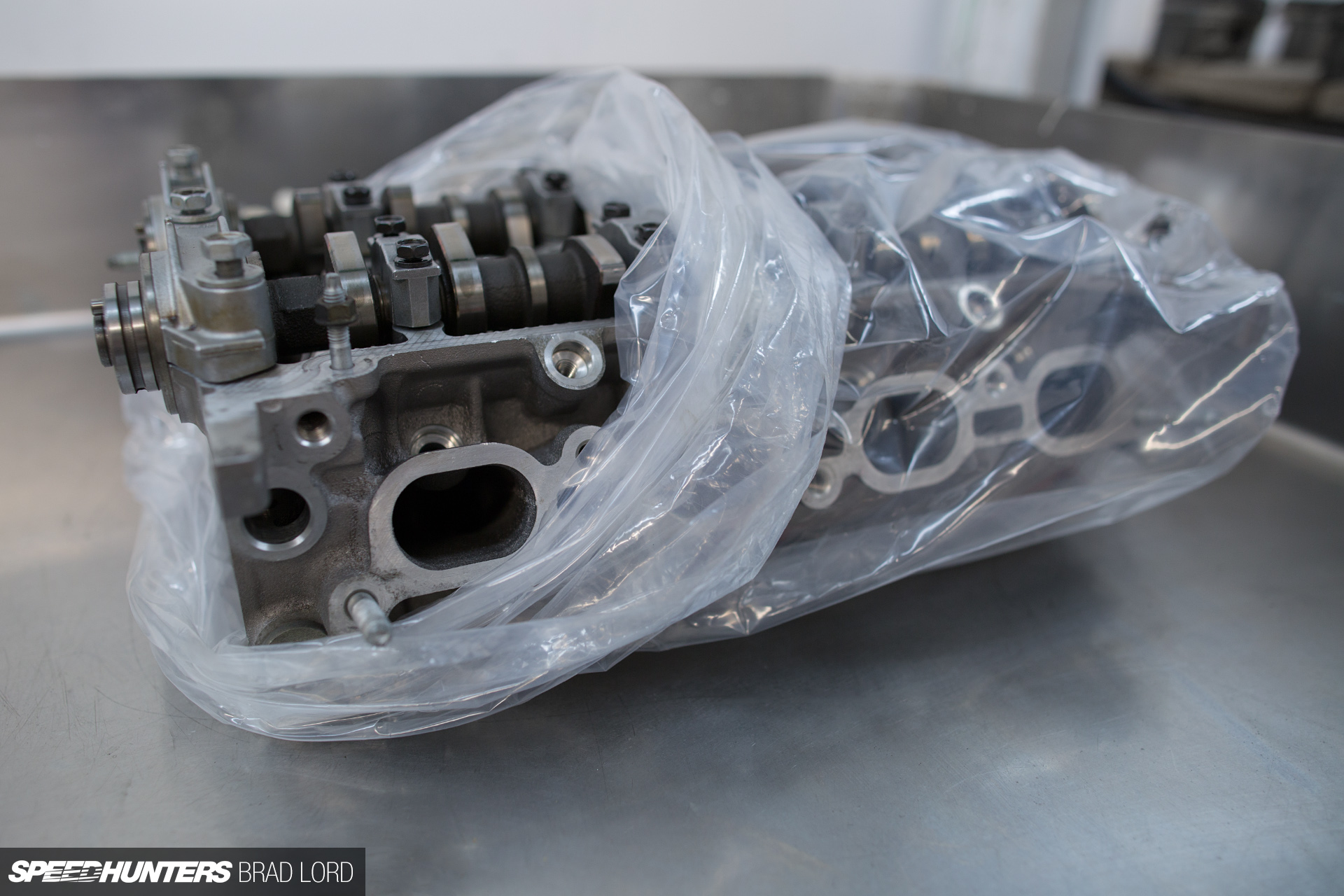
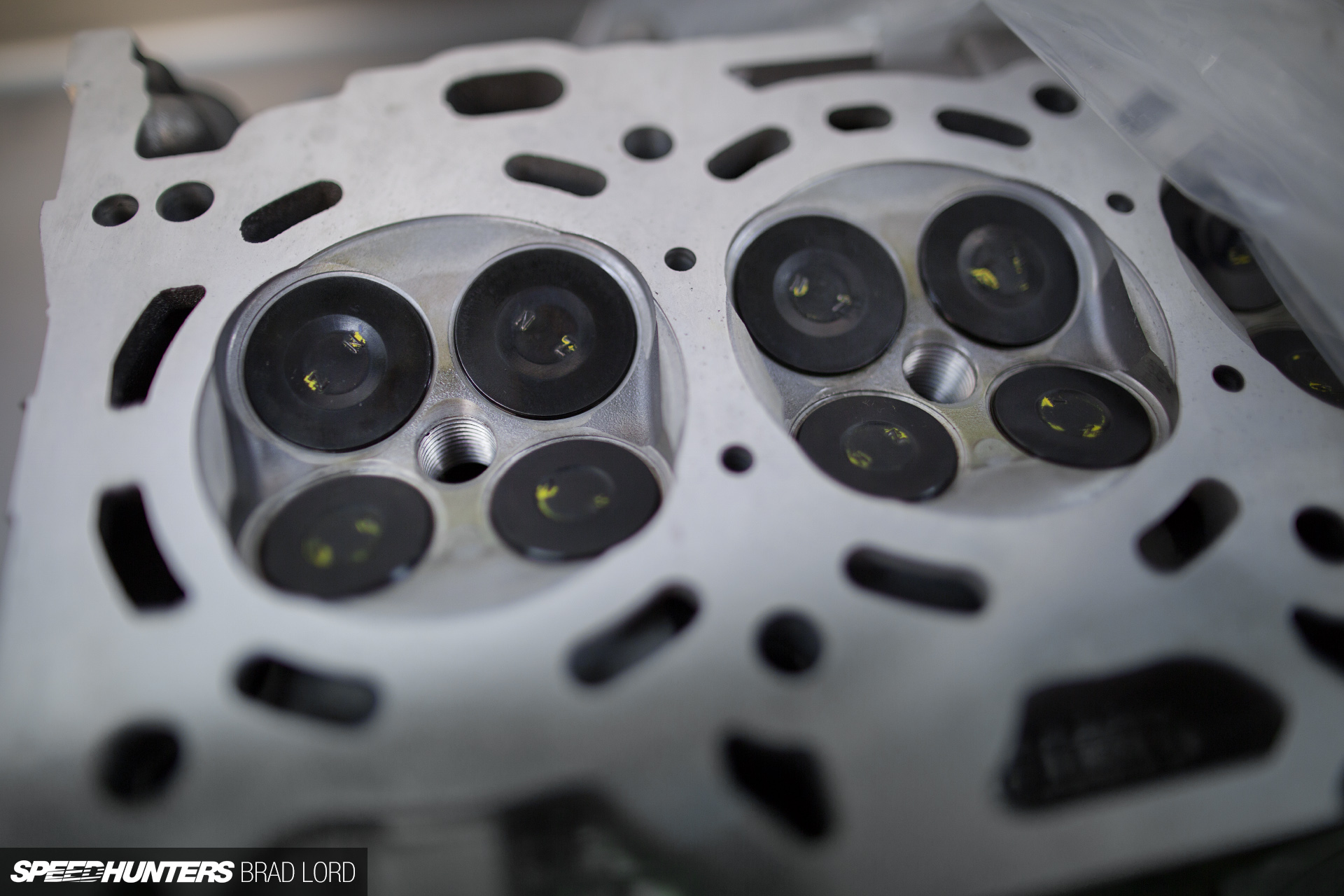


















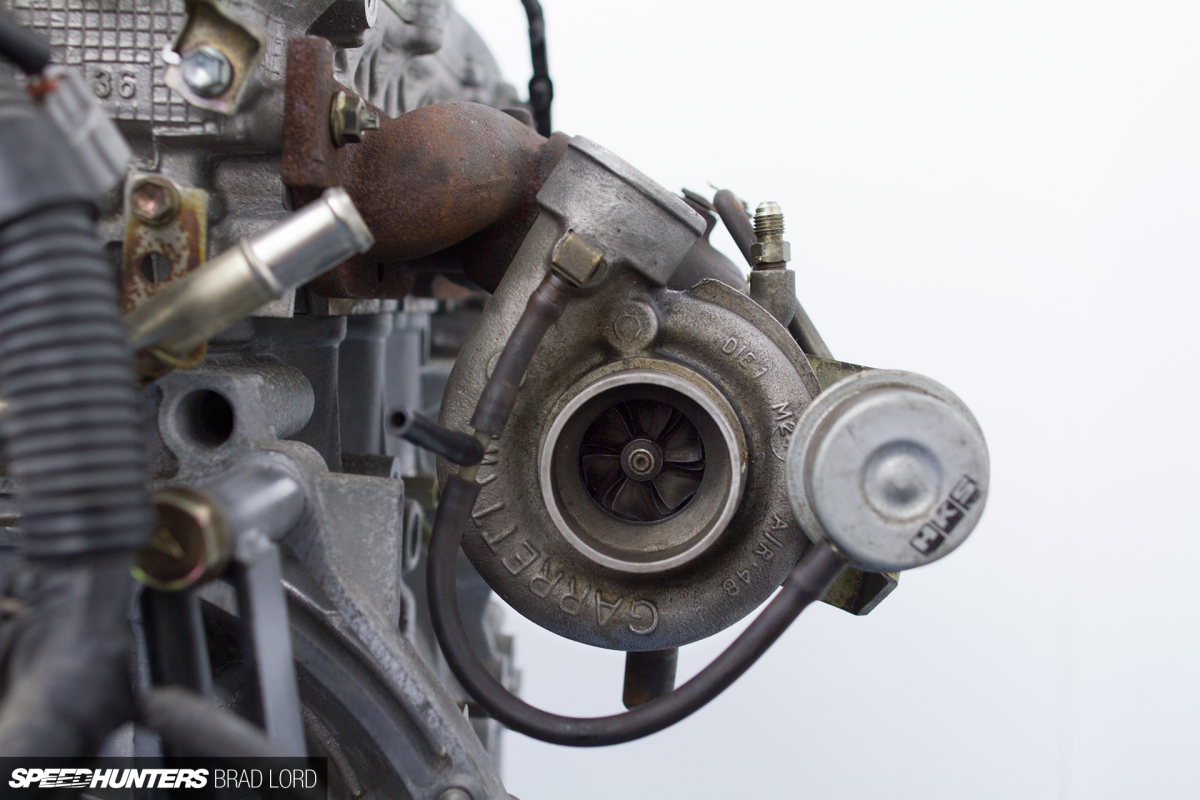
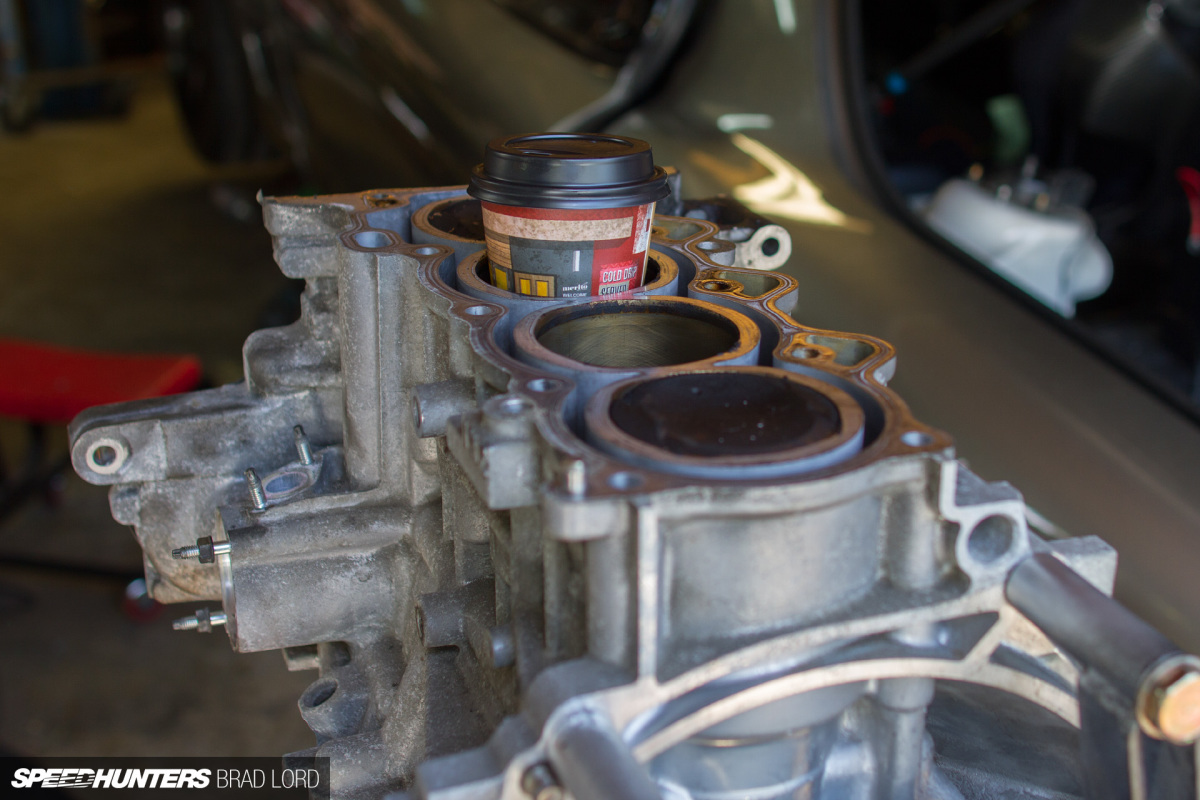
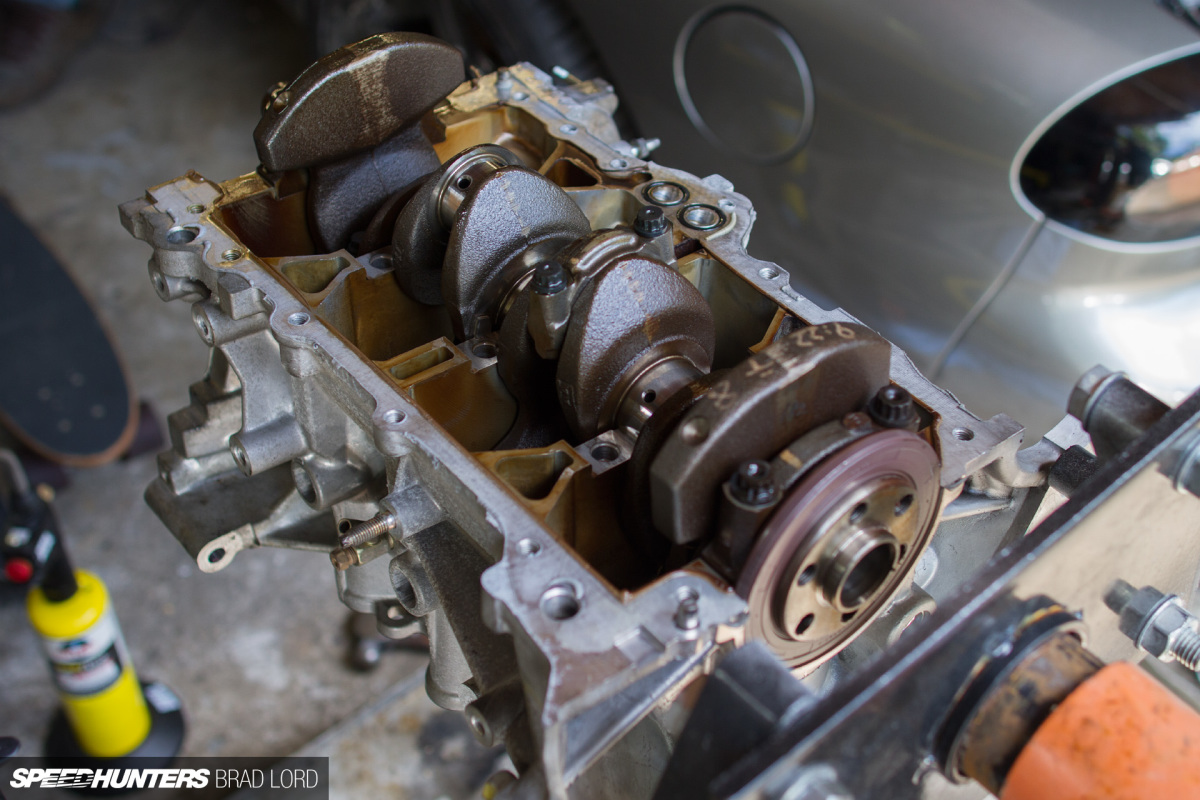
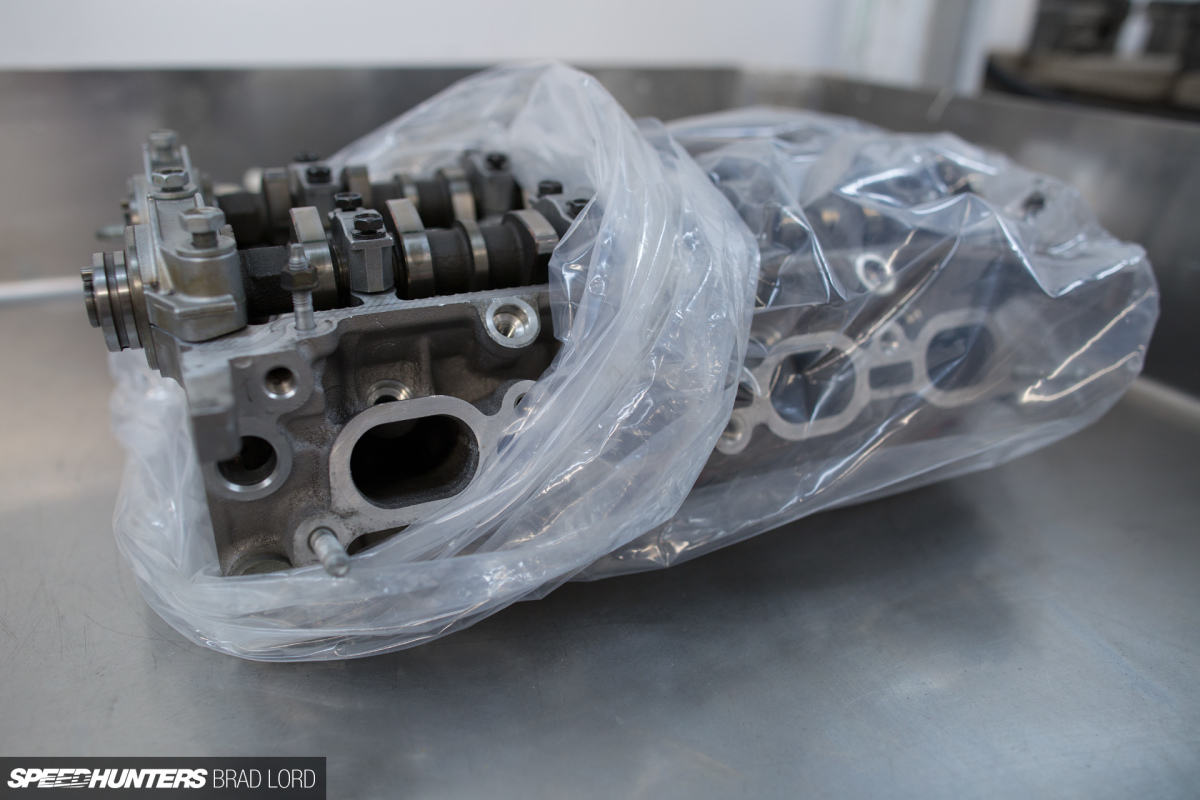
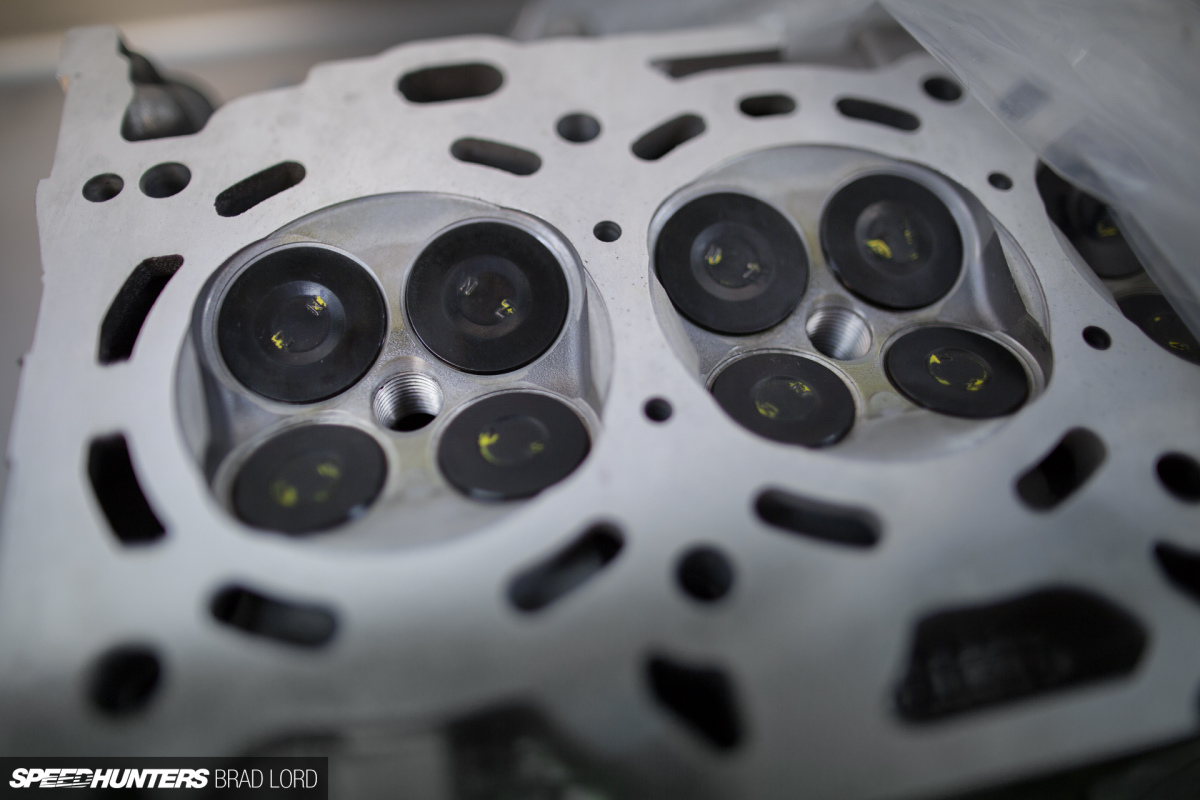
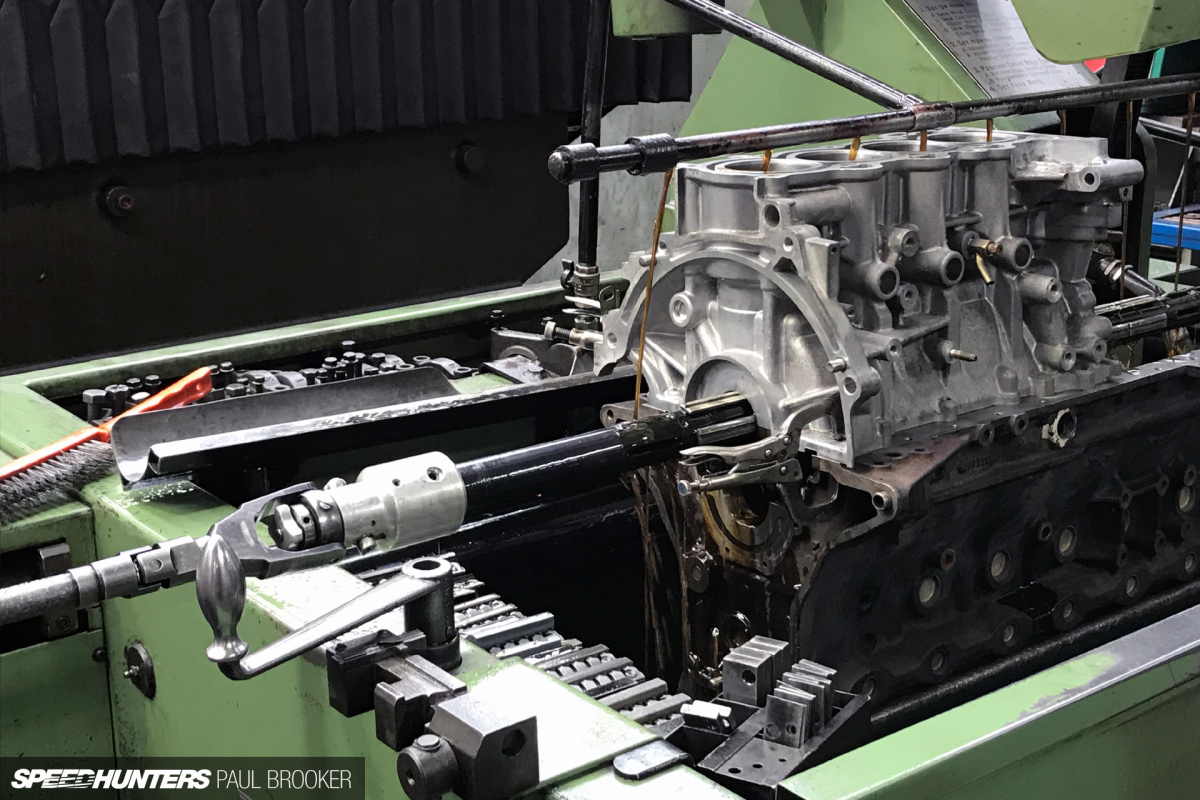
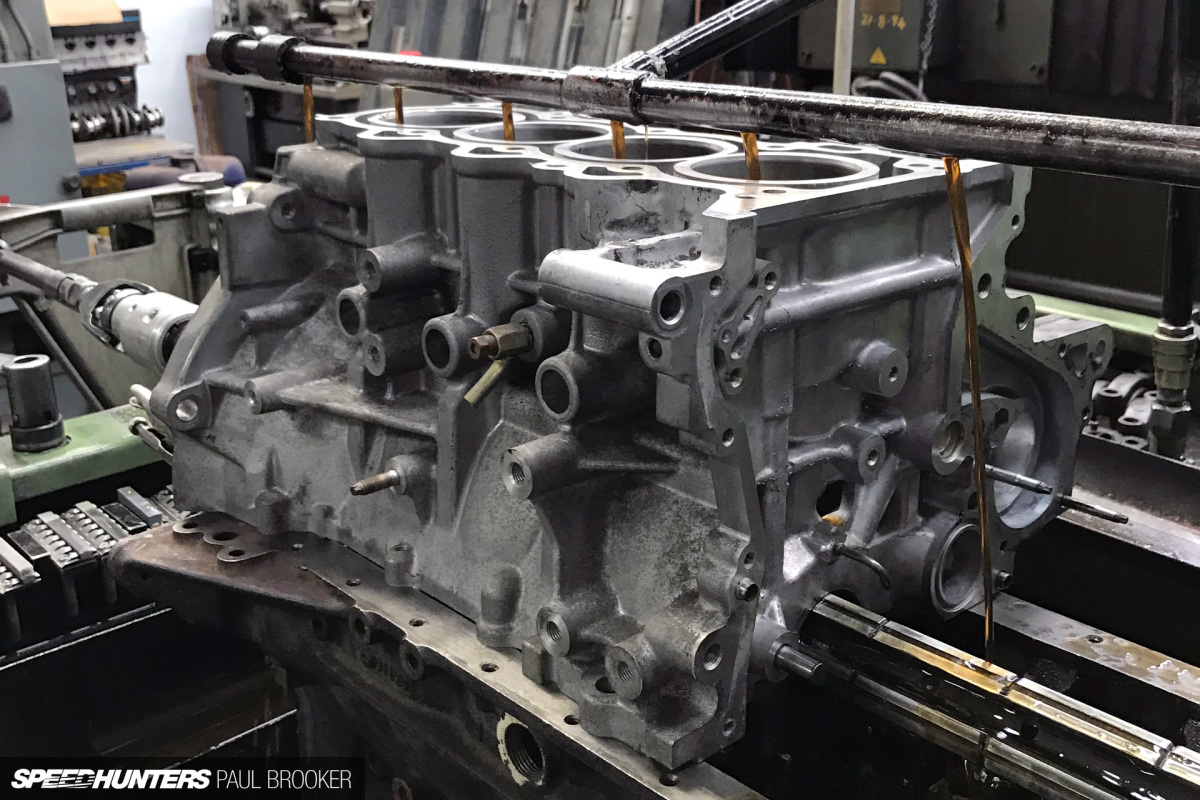
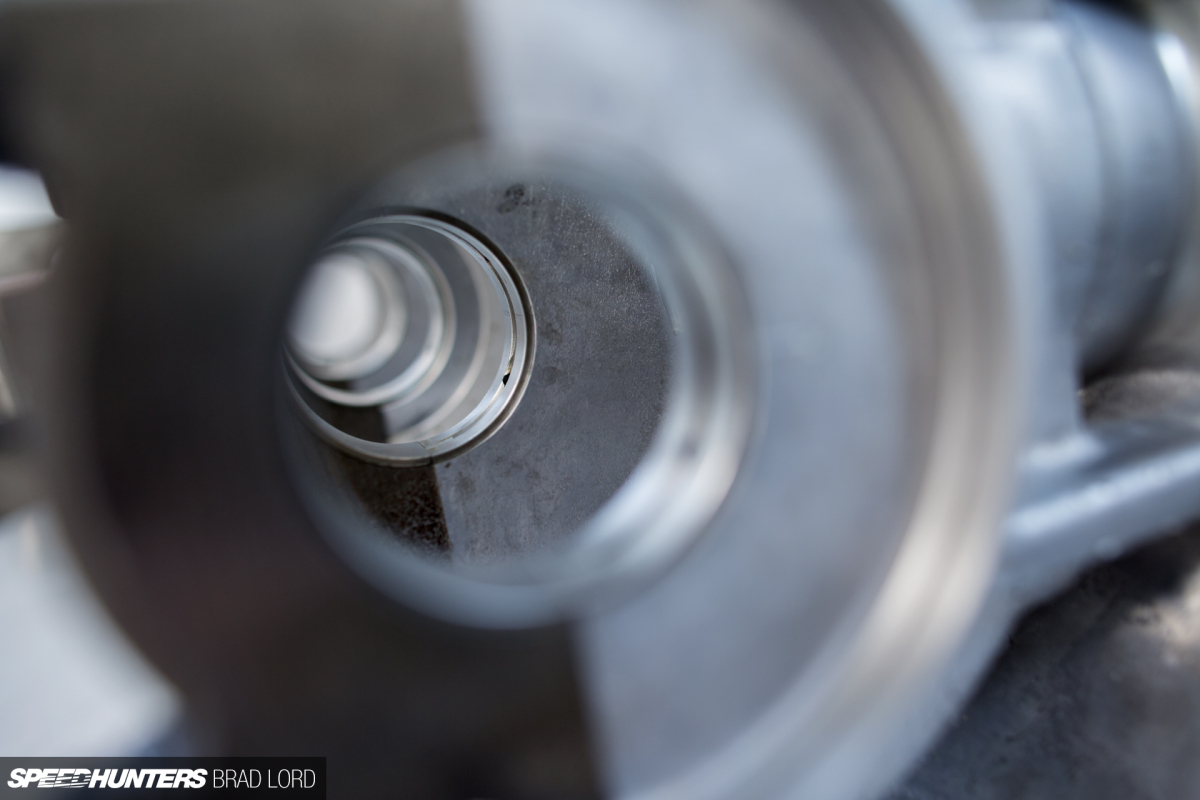
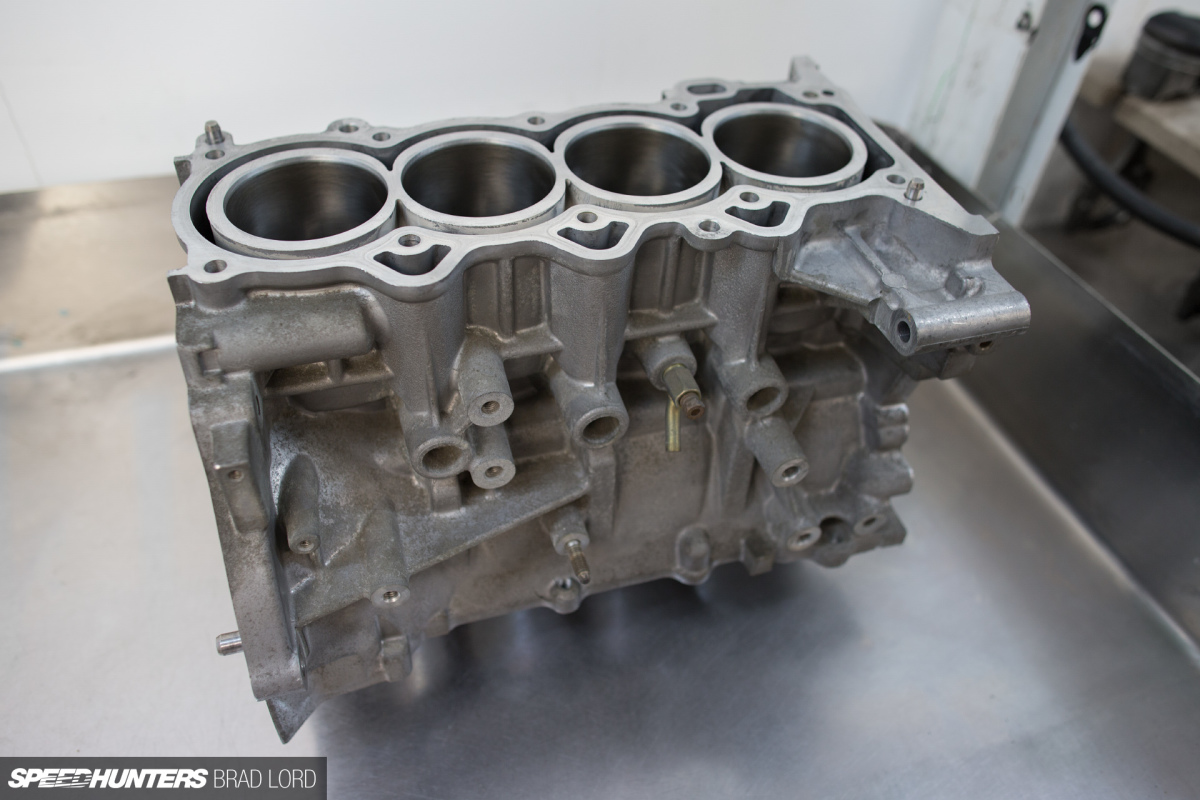
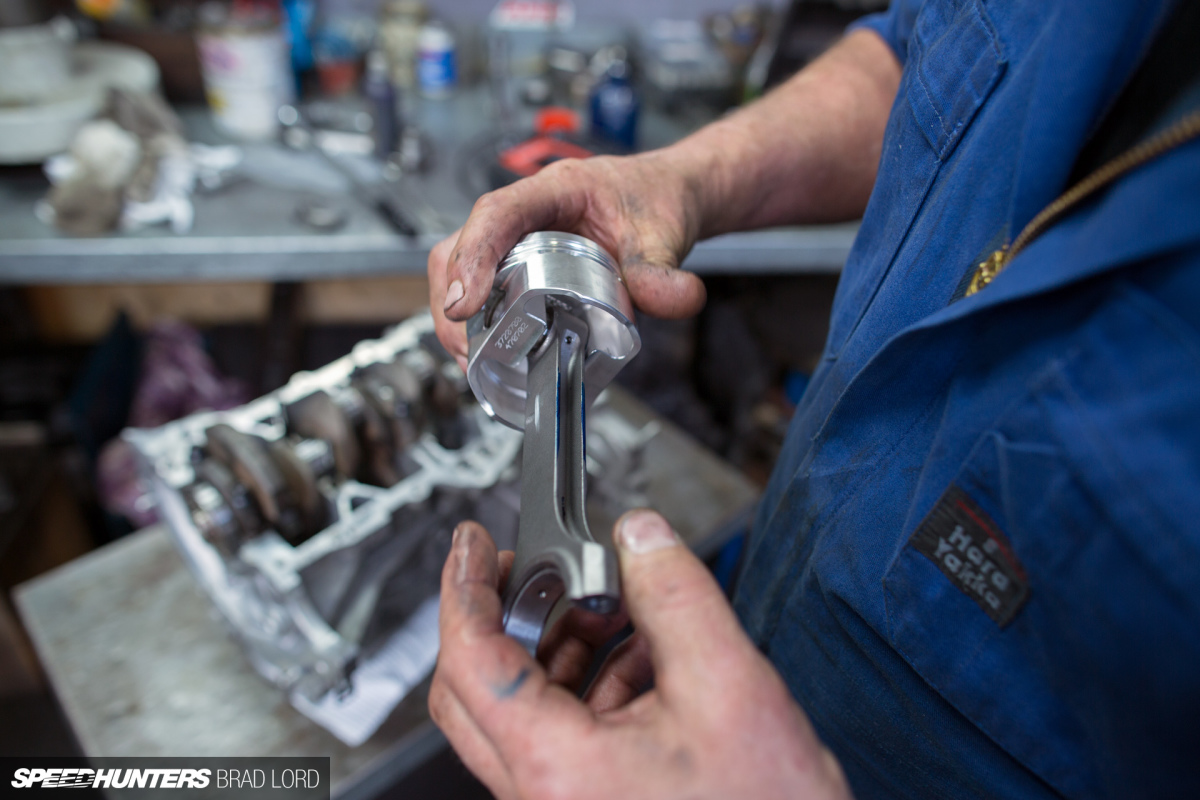
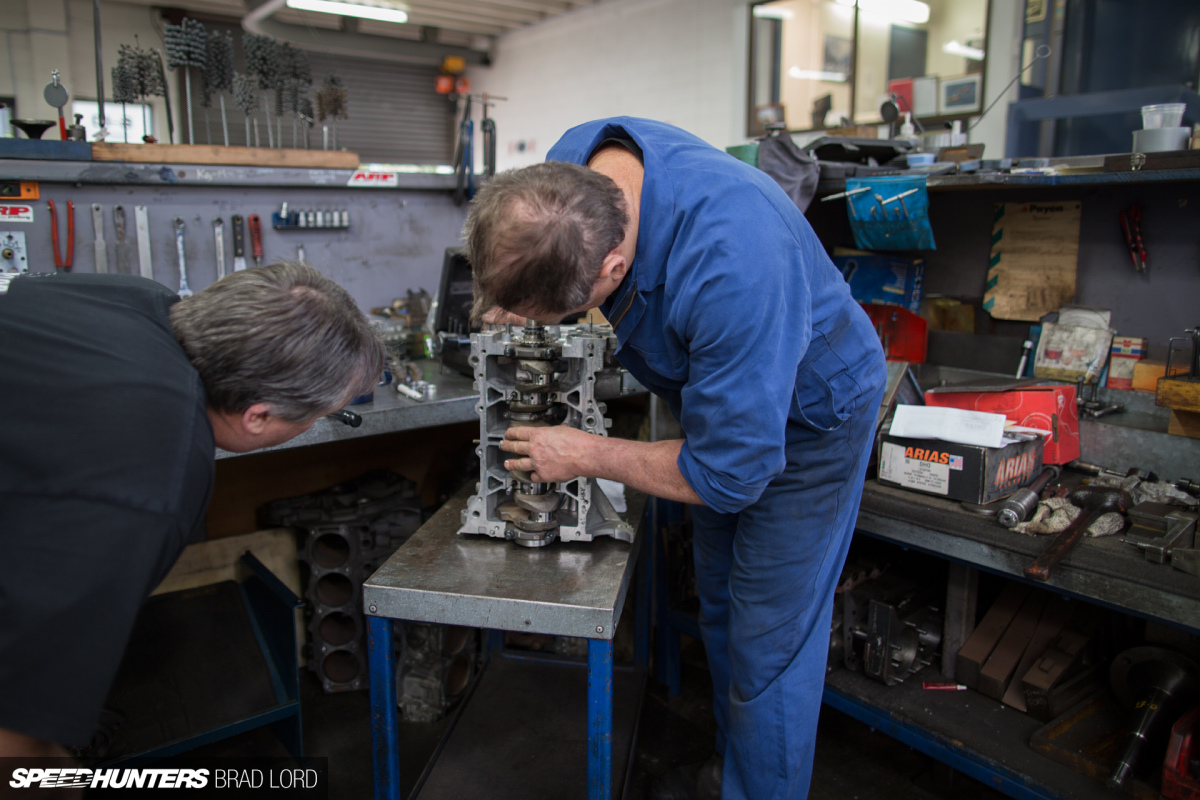
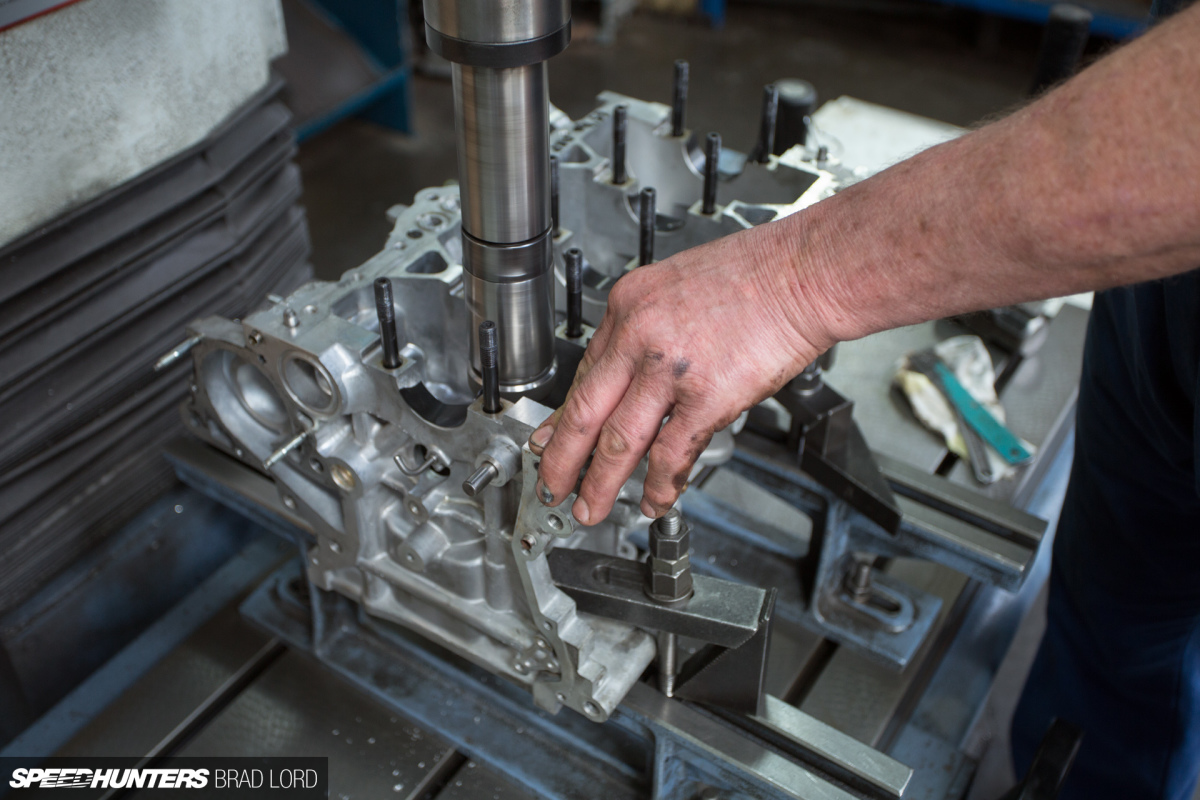

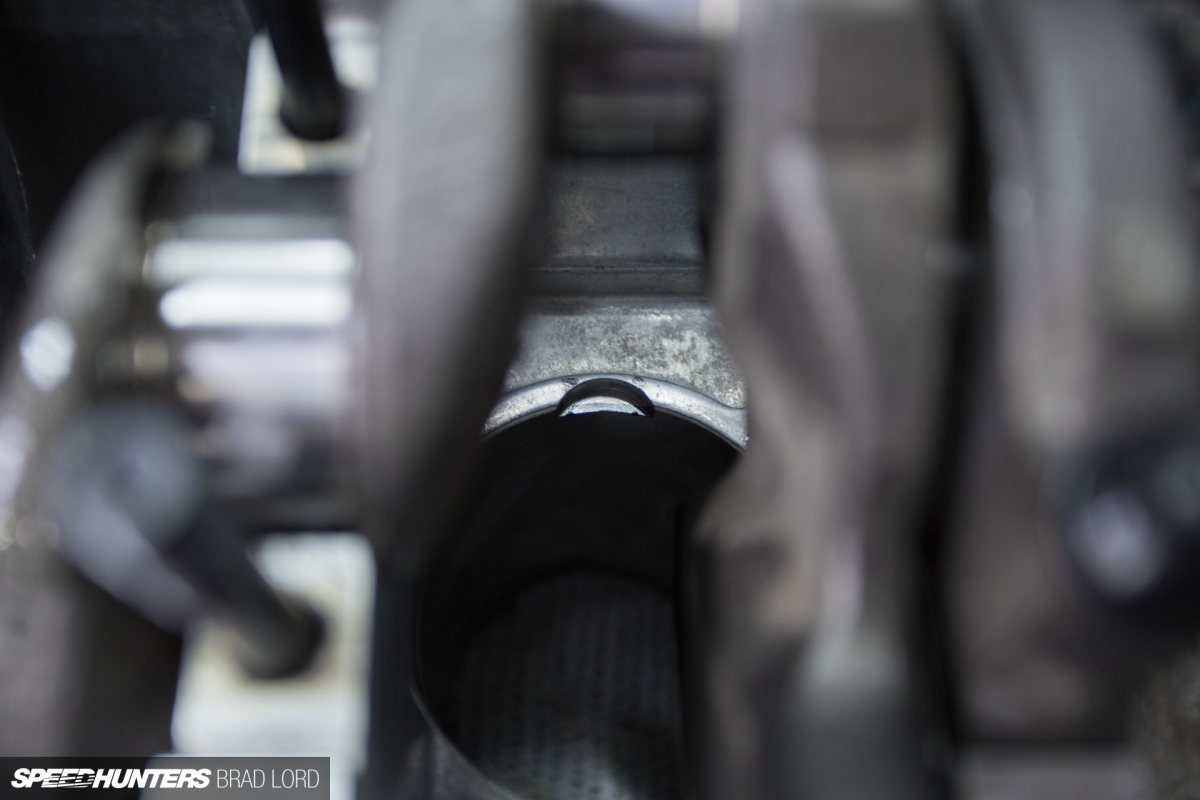
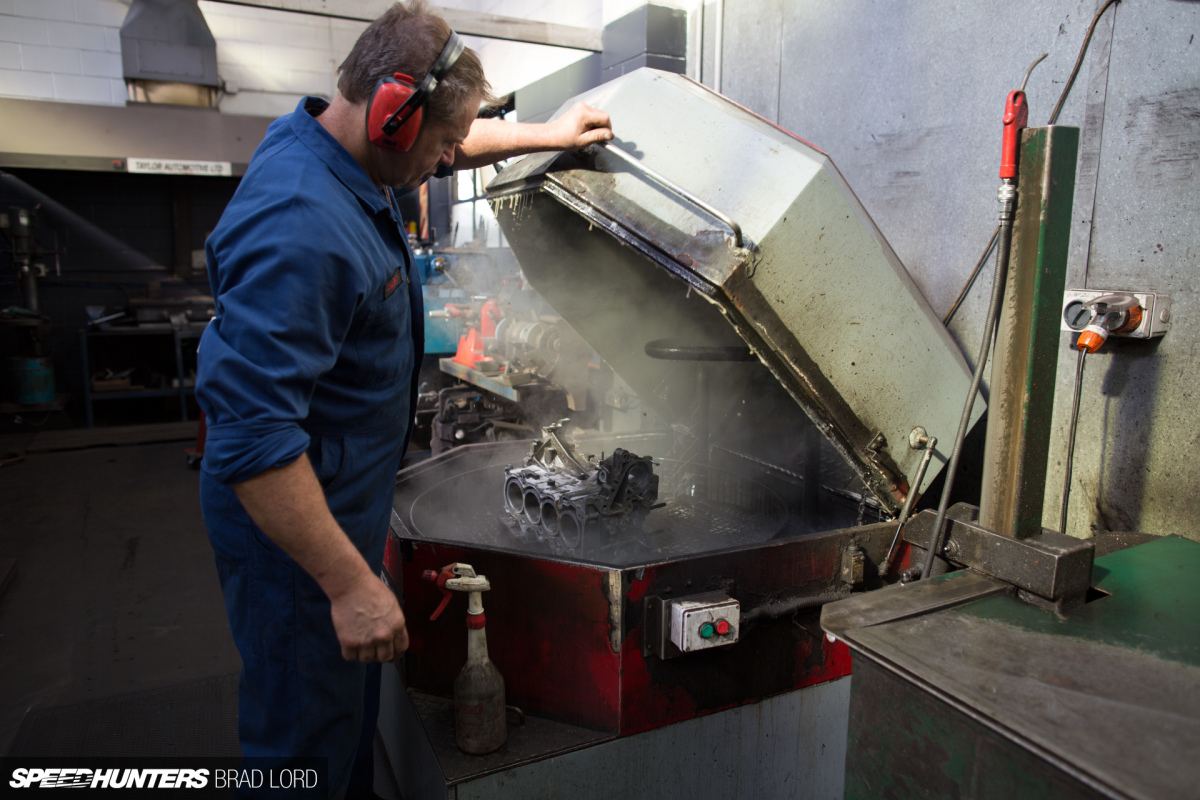





why Not a 2zz ge swap? Are you going for more power or just Choo choo noises lol
I like the 2ZZ, but for this car I wanted extra low-down torque not high-RPM power. It's just a fun cruiser/toy.
2zzge would be heavier for a minimal increase in power. and the parts would be more expensive for it. also you add in complexity and not being able to hone the block because of the fiber shit they use in the block. also a 1nzfe cost about 368 dollars WHOLE on ebay. a 2zzge cost in the thousands and thats before parts.
They’re dead cheap here. I did find pets to be expensive when I had one and the only garage that would to engine work was a lotus specialist who wasn’t cheap
Wow, I almost forgot about that car. Cool that we got an update after all his time, will we get another feature this year ? Also, what's with your AE86 ? Do you still own it ?
Yes and yes. I've stopped buying cars I don't need, so hopefully we can get both cars finished sooner rather than later!
"The Arias pistons turned out to be smaller than what they’re advertised as (they’re actually stock sized not +0.06mm oversized)"
Keep in mind that forged pistons expand more with heat than regular cast pistons.
If a stock worn piston is about .025 under the nominal value of the cylinder diameter, then a typical forged piston is about .1-.09 under.
So if it measures the same as a stock piston when cold, it will still have a larger diameter when its up to operating temperature.
In any boosted engine, the piston-to-wall clearance is only second to correct ring gap.
1+.
This is true.
To be more precise, there are two types of alloys used (predominantly) for such pistons.
The ones that are called hypereutectic are the ones that have a *radically* bigger thermal expansion rate.
But even the other ones, which expand less than the Hypers, do indeed expand somewhat more
than a stock, OE piston.
Actually Hypereutectic pistons have far more silica in the alloy than non hyper cast and actually expand far less than a conventional cast piston. Virtually all factory pistons are Hypereutectic in the modern era. Forged pistons have almost no silica in the material and therefore expand much more. The true effect of the silica is a lot like tempering glass. High silica amounts will create a very hard, yet very brittle material. Forged pistons lack of silica makes them very "soft" yet much more resistant to shock like detonation. This is why forged pistons can actually have severe ring land wear where hyper pistons wont over the same operating time.
My examples are based on the usual 80-90mm bore engine.
Thanks Twist. I spoke to Arias when I found out the pistons were smaller than what they advertised them as, and questioned the piston-to-wall clearance to see if we had any leeway there. Their answer was that it had to be .0030" – no more or no less. The standard pistons appear to require a piston-to-wall clearance of .0020", which I guess explains the finished bore size for the Arias pistons to be 75.01mm instead of the stock 75.00. If the bores were corrected, the pistons needed to have a .05mm larger diameter than what they are, so the 'advertised' 75.06mm Arias pistons would have been right on the money.
You do not generally want to notch your block with sharp square edges, as shown in your pictures. The edges and sharp corners are prone to becoming stress concentration points. I seriously doubt that this will become an issue in your engine, but as a general note you should have smooth transitions and tapered edges around where you've notched or otherwise modified your block.
Thanks Audiojack. We are yet to assemble the motor, so looking at the edges of the notches is something I planned to raise with my engine builder.
why Not a 2zz ge swap?
I did contemplate the 2ZZ, but it's a tight fit in the bB/xB engine bay requiring one of the front chassis rails to be notched, which I wasn't too keen on. Also, I wanted to go turbo, so it just would have been an extra expense – although the results would have been good I'm sure.
9:11 amSeptember 11, 2018
thathellastockusdm3rdgenyaris@instagram
2zzge would be heavier for a minimal increase in power. and the parts would be more expensive for it. also you add in complexity and not being able to hone the block because of the fiber shit they use in the block. also a 1nzfe cost about 368 dollars WHOLE on ebay. a 2zzge cost in the thousands and thats before parts.
#boostedtoaster
#boostedbox
Awesome Brad, nice to see some progress in your current build!
I also have the 1NZFE in my 3rd gen yaris but the oiling holes or something on the block is slightly different. none the less this will be a good guide to do what you do to your, i can also do to mine. you should include a parts # list of the things you used that were from TRD and or toyota. it would help. this engine doesnt get enough support thanks for changing that.
That's a good idea re: the parts # list. I'll see what I can put together in a future update!
800 hp, widebody, tube frame, 2jz, e30's are great and all but it's really nice to see a build that makes the best of what you have on a normal budget. excited to see the results.
Thanks Aaron!
I wish the media would stop singing Bisimoto's praises, the guy is a known con artist in the Honda community.
Those valvesprings must have a really low spring rate (and really low seat pressure) for the boost to factor into spring performance a significant amount.
Any idea what the spring rate and seat pressure delta is between the Crower units and the stock springs?
I couldn't tell you to be honest, but if the opportunity arises to check the spring rates of the original springs I will do that, and then compare to the BC units. The valve spring (and main stud) upgrade wasn't one I originally planned to do, but when we were stripping the engine down my engine builder commented that for peace of mind would be a good idea to upgrade both if there were parts available to do so. Were they 100% required? – No, but the cost wasn't great, so I decided to do it.
I also change that last year, I use TD04 turbo, CP pistion, Max Rod, ARP bolts, and little bit differnet of you, I change 6 GearBox (C160), I'm interest how many boost bar are you tuning ?
Hi Zeta, cool bB Open Deck! I will be running less than 1bar boost, perhaps 10-12psi – we'll see how it goes. I'm interested to know how the C160 has worked? No problems?
is very smooth to run, but so more works to use c160 gear box, because the housing and the power lock want to use c150,the max speed use c160 can run 235km, more 20km than c150, and i tuning to 1.1 bar to the boost, is reliable, but i only use AEM FIC 6 for tuning ecu
That sounds like a nice setup! Thanks for the info about the C160.. I will likely use the AEM FIC-6 too – did you custom wire it or use a harness, like Boomslang?
only can use custom wire for AEM Fic 6, but wiring little bit technical for the crank sensor, cam sensor and O2 sensor, otherwise the timming cannot tuning
Thanks Zeta. There is a Boomslang F/IC harness for the Scion xB/xA, but I am not 100% sure if the ECU is the same as the bB. Do you have any video of your Open Deck? Would love to see how it goes...
before I also see it , the boomslang maybe use for Fic 8, I'm not sure, anyway open deck also cannot use, the car ecu is first generation(2000-2003), different of 2nd generation(2004-2005), how can I upload the video? I only have last year track day in car use C150 gear box, C160 have street video, this year November will join track day again
amazing work
Thank you Sergio!
This looks very promising.
The 1NZ-FE has a very competitive rod-length/stroke ratio (IIRC it was north of 1,75), which should make
for a good boosted application.
The notches made for the conrod-clearance are somewhat sharp-edged, they might decrease the (anyway not super-strong...)
block stiffness, which for boosted applications can be an issue (although this very build should not be that dramatic of a spec., so shouldn't be a worry...).
As for the valvespring rates, it is basically true, but really needed if running seriously high levels of boost. If not, it just increases your frictional losses. Again, if not a competition engine, it doesn't matter that much, as it gives you a layer of "peace of mind" that psychologically helps when building a boosted motor.
The running-in phase should be critical in this build, having in mind the relatively "loose" piston-to-cylinder clearance. You have to make good use of the limited period of time while the honed surface is still there, to make sure the cylinder pressures are up to at least decent levels (one cannot underline enough the importance of a healthy cyl.pressure in turbocharged applications).
Make sure you split the running-in into two stages : first off-boost, and then low-boost, gradually (with proper type of mineral
motor oil, religious warming-up & cooling-down procedures/laps etc.)
A very nice article. GLWTB!
Thanks for your comments and some great advice Al! The forged piston spec require a little more cylinder clearance than the Toyota factory pistons, but it still won't be perfect, as it would have been if the pistons were the size they were advertised as. We're definitely not going to rush anything when it comes to running the engine in – hopefully it all works out.
Since I have a 1.5L aveo LS with little bit less than 200 000 KM and I've spent the last week searching around the web and couldn't find anything to this engine (only a "rumor" that it resembles the Toyota 1.5 and a Daihatsu engine with only 8 valves instead of 16), I'll be checking and refreshing the main page extensively until I see your next update (hope it's sooner than my engine failure).
Btw, if anyone have any information of my re-badged Korean i'll be very happy to know before i throw it from a high cliff.
I believe that if I'm thinking of the right model year, it's a Daewoo E-TEC engine which is based off of GM Family 1, these are basically Opel/Vauxhall engines.
it is an E-TEC I rebadge Korean (as i already said) but when searching for performance parts/ upgrades i did find some relating the engine to the Japanese manufacturers (Toyota and Daihatsu)
As it's based on an Opel engine, I'd suggest looking at Opel aftermarket parts as well. I don't think either Daewoo or General Motors would have sourced anything from Toyota.
Such a strange build...... I dig it